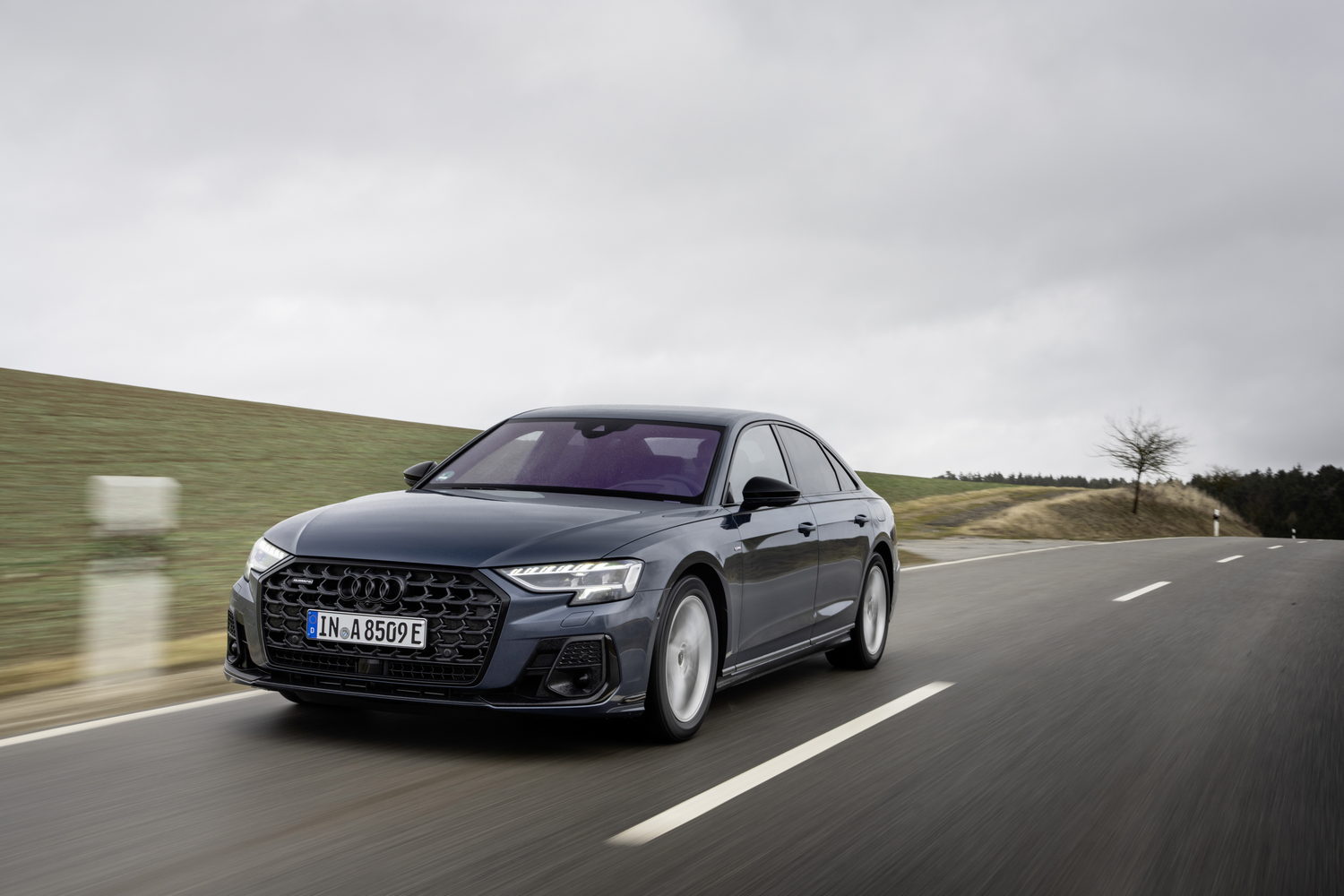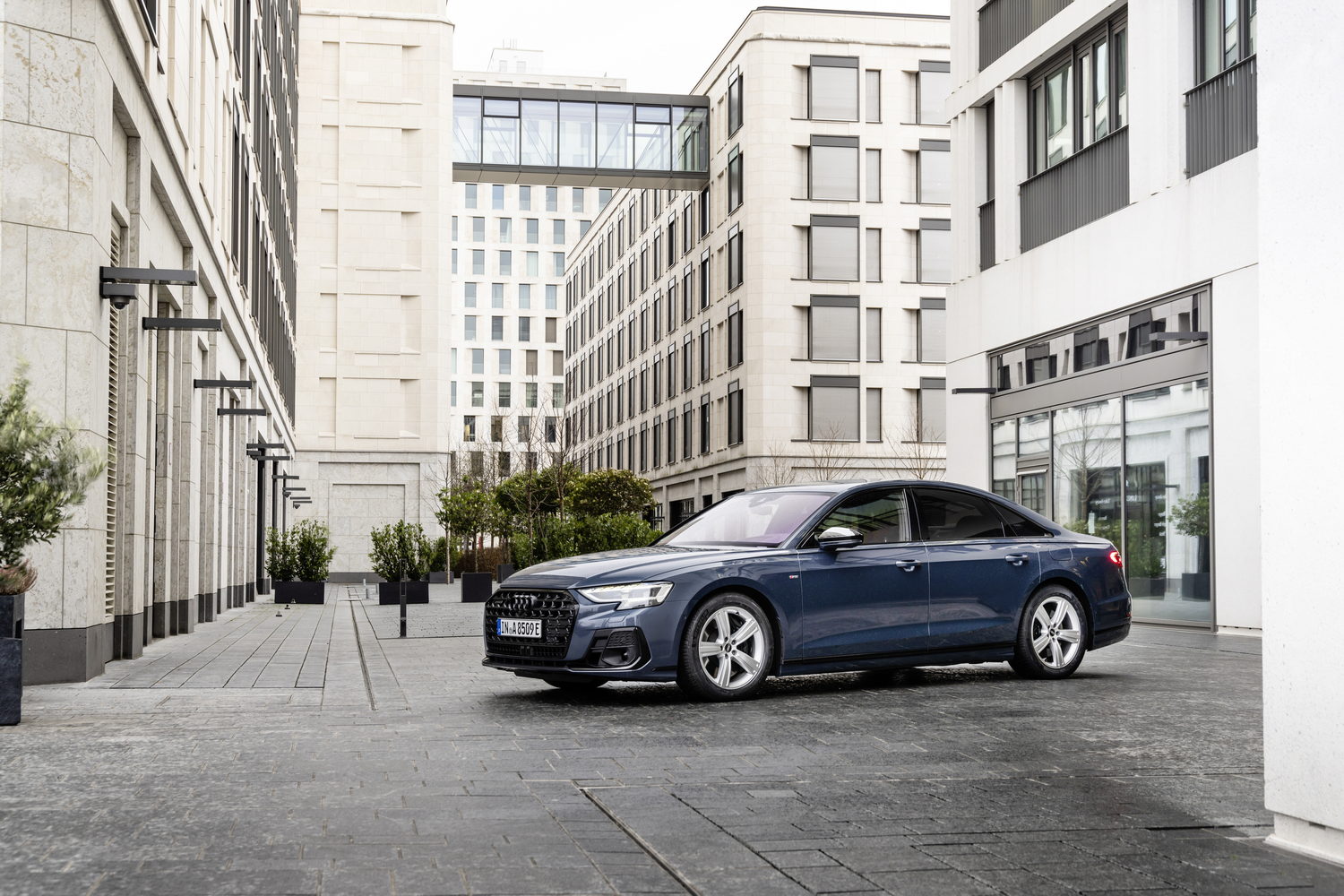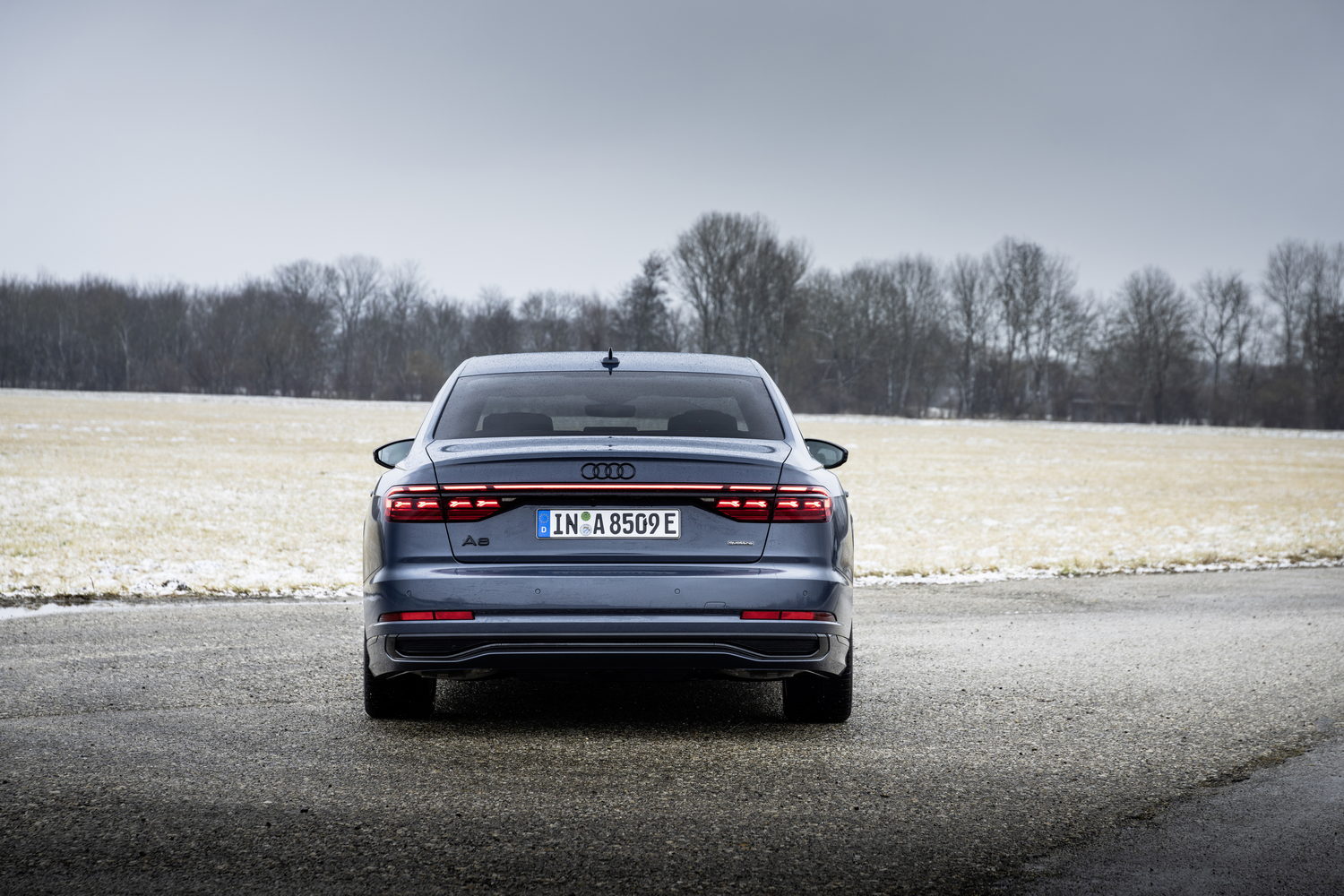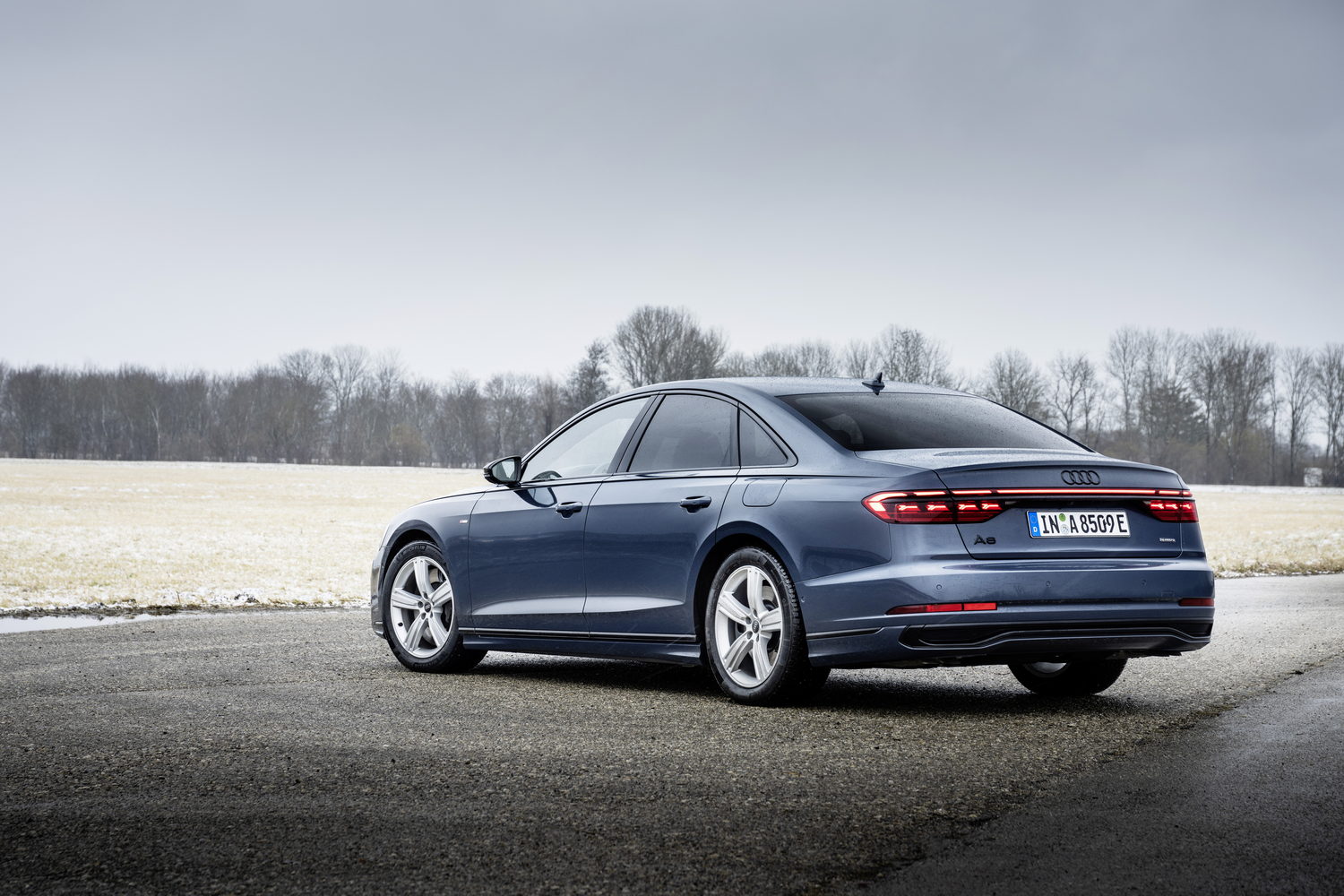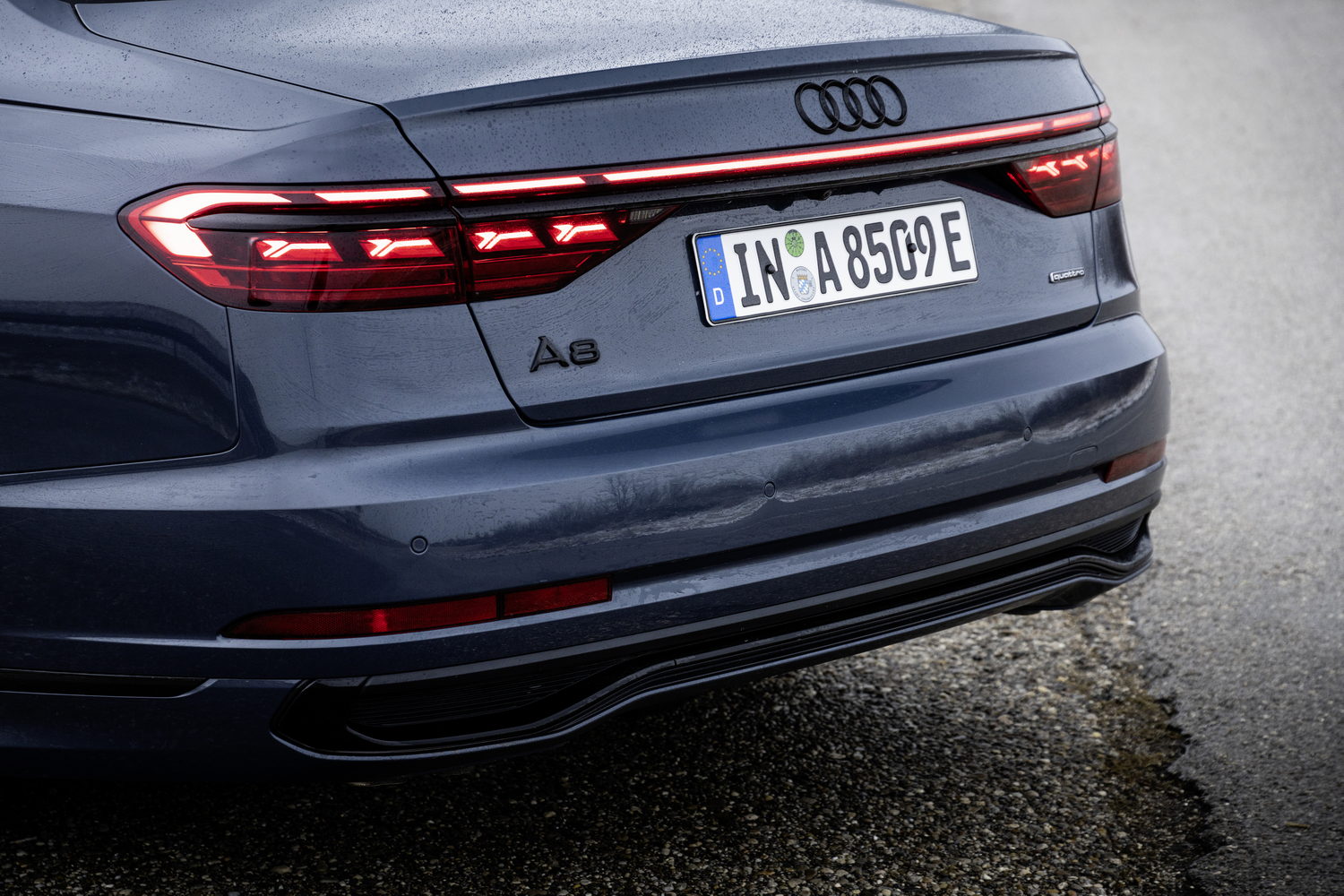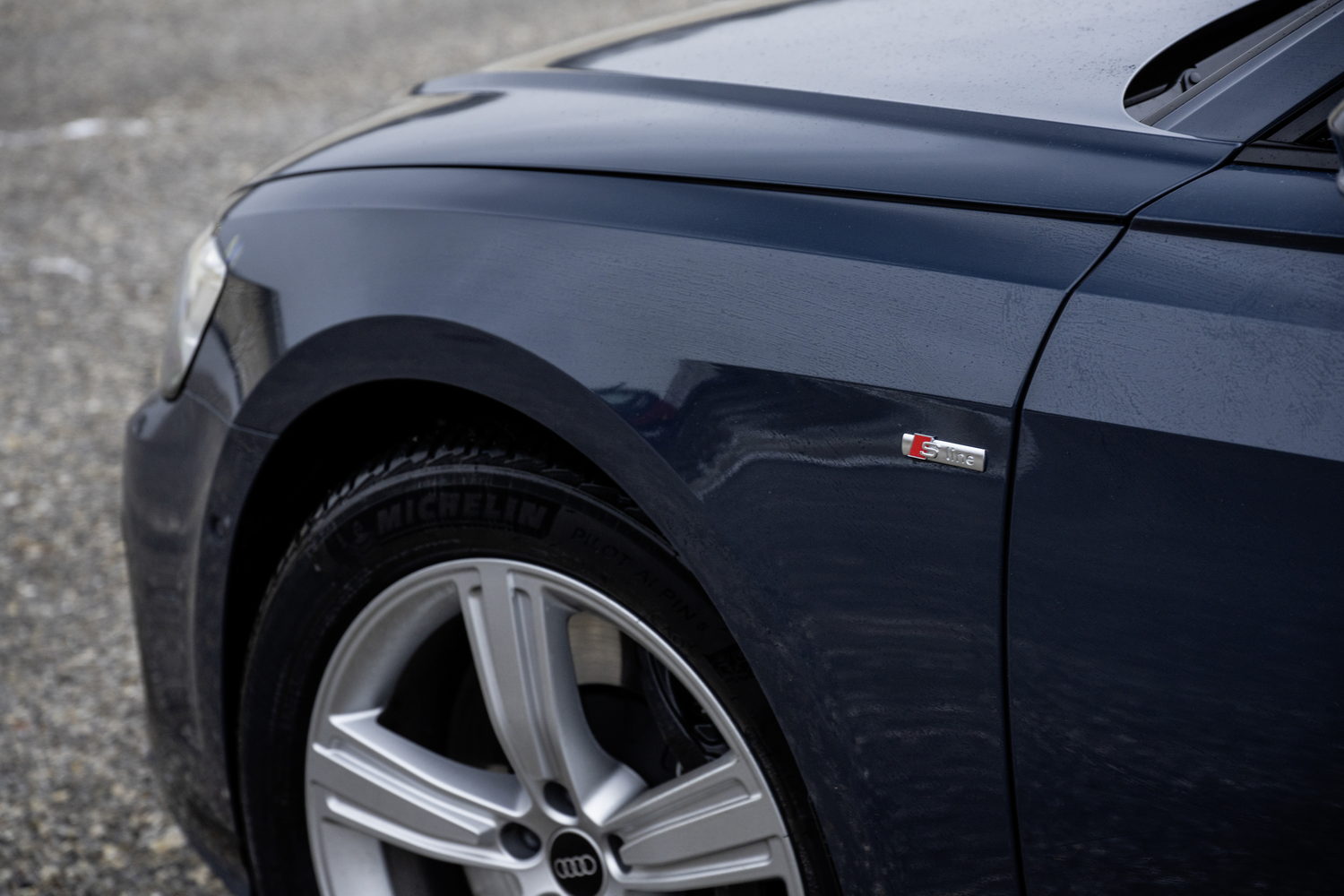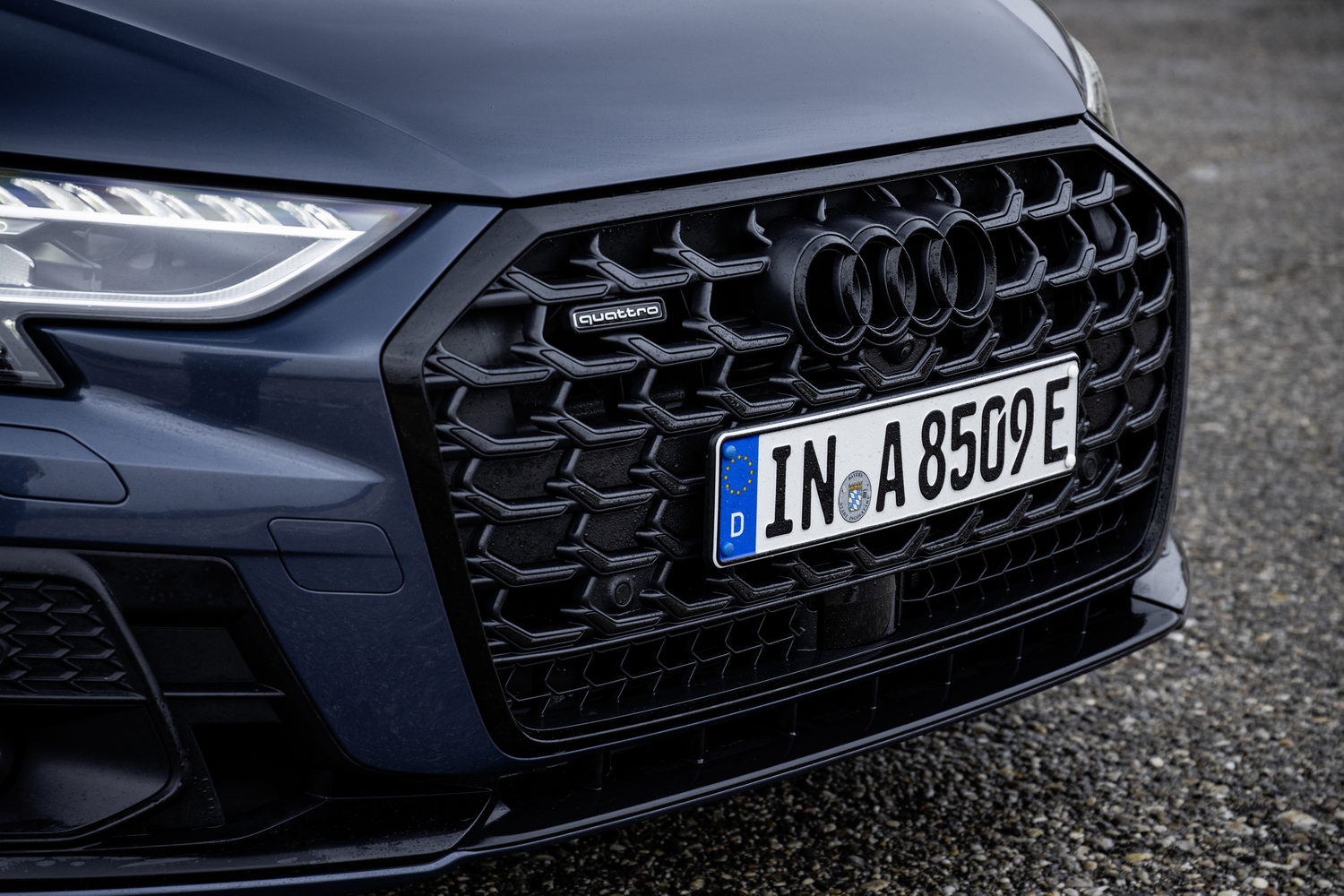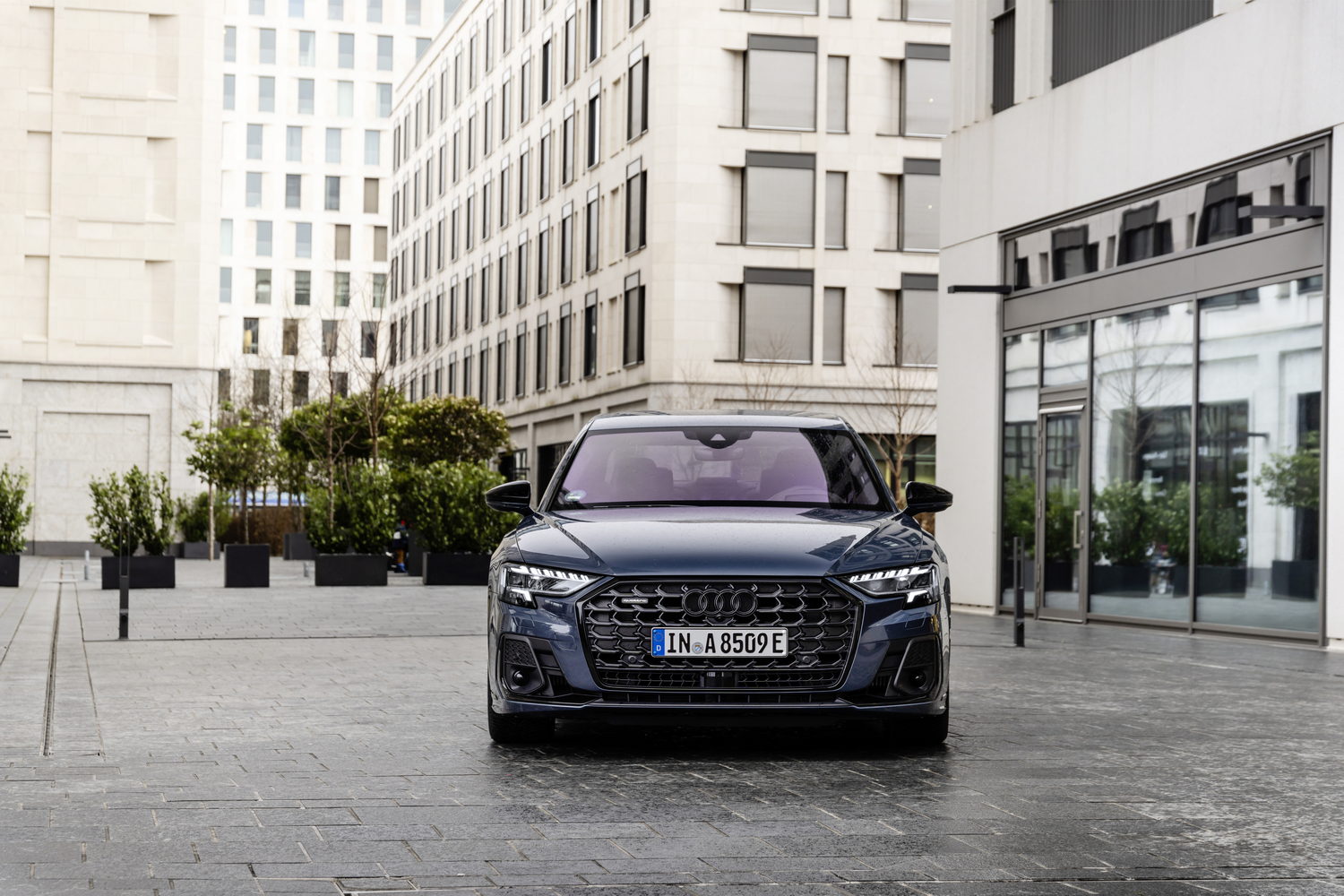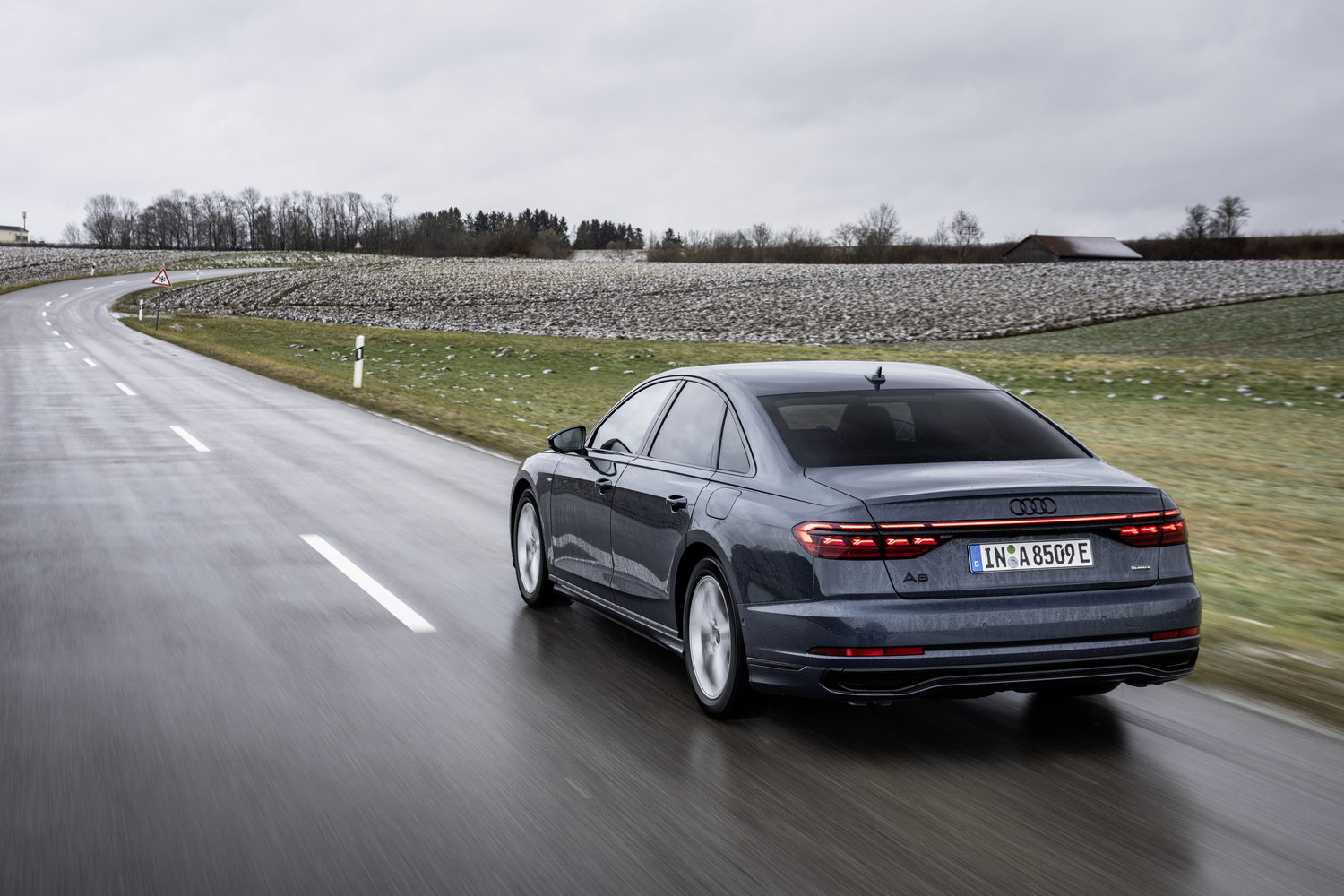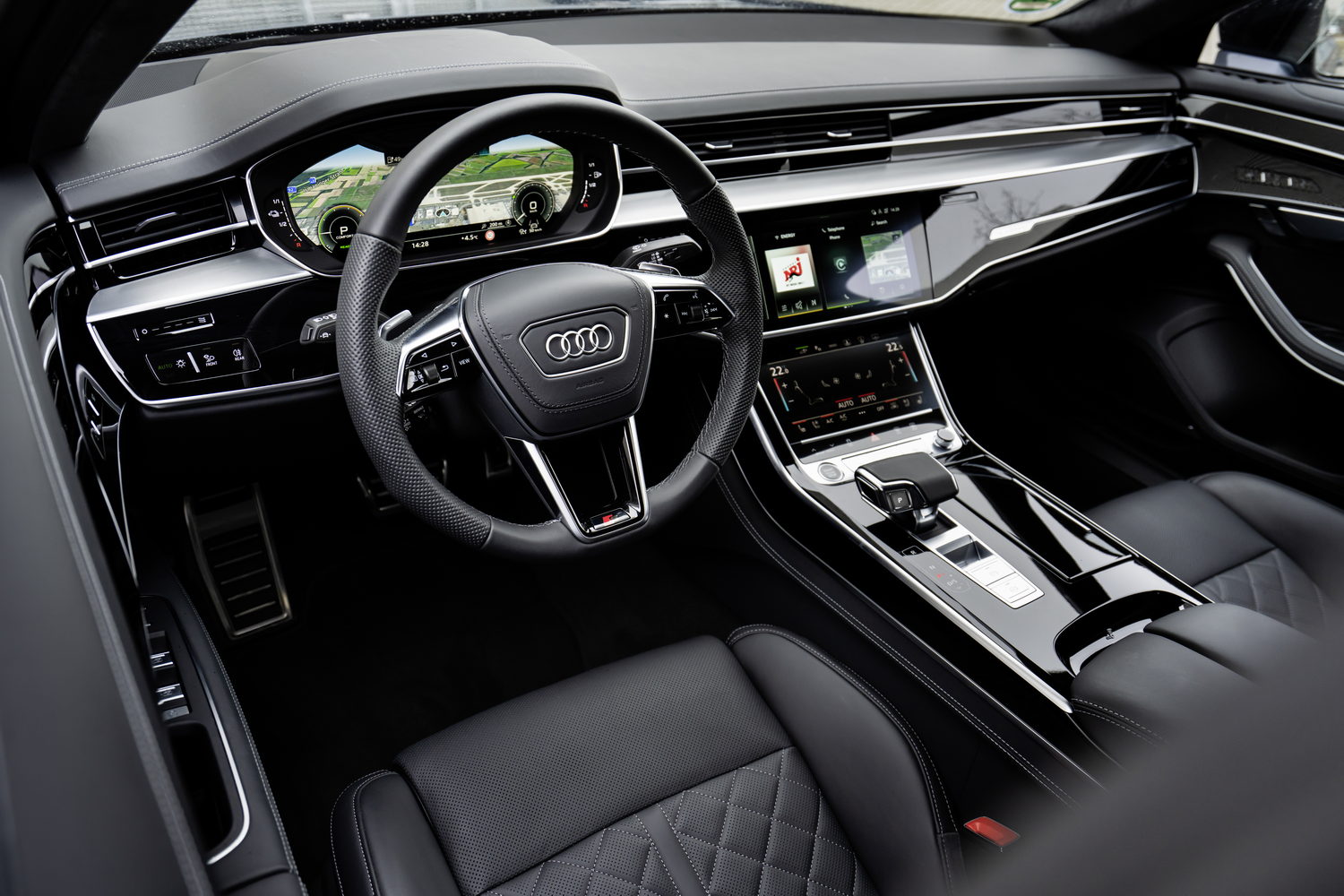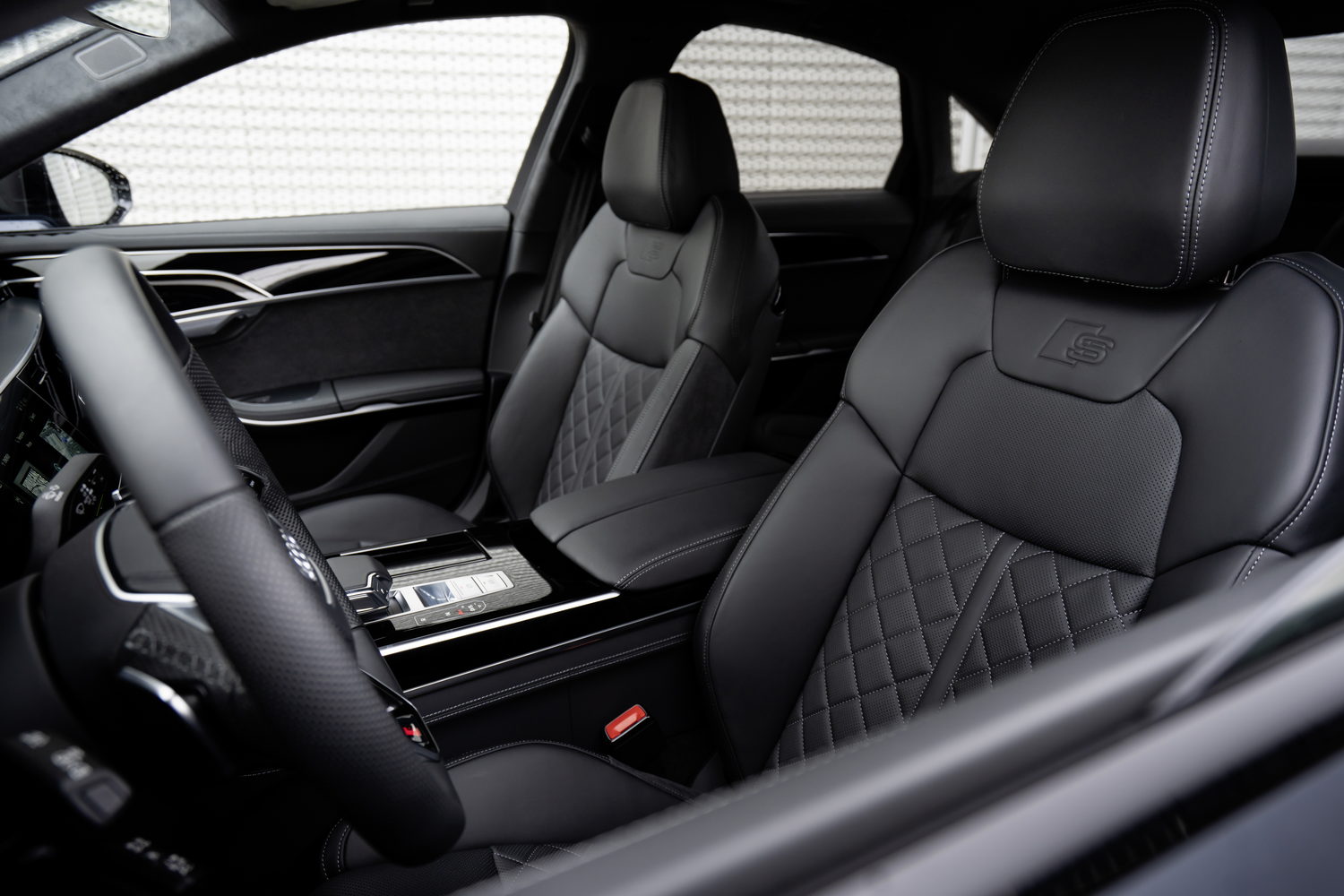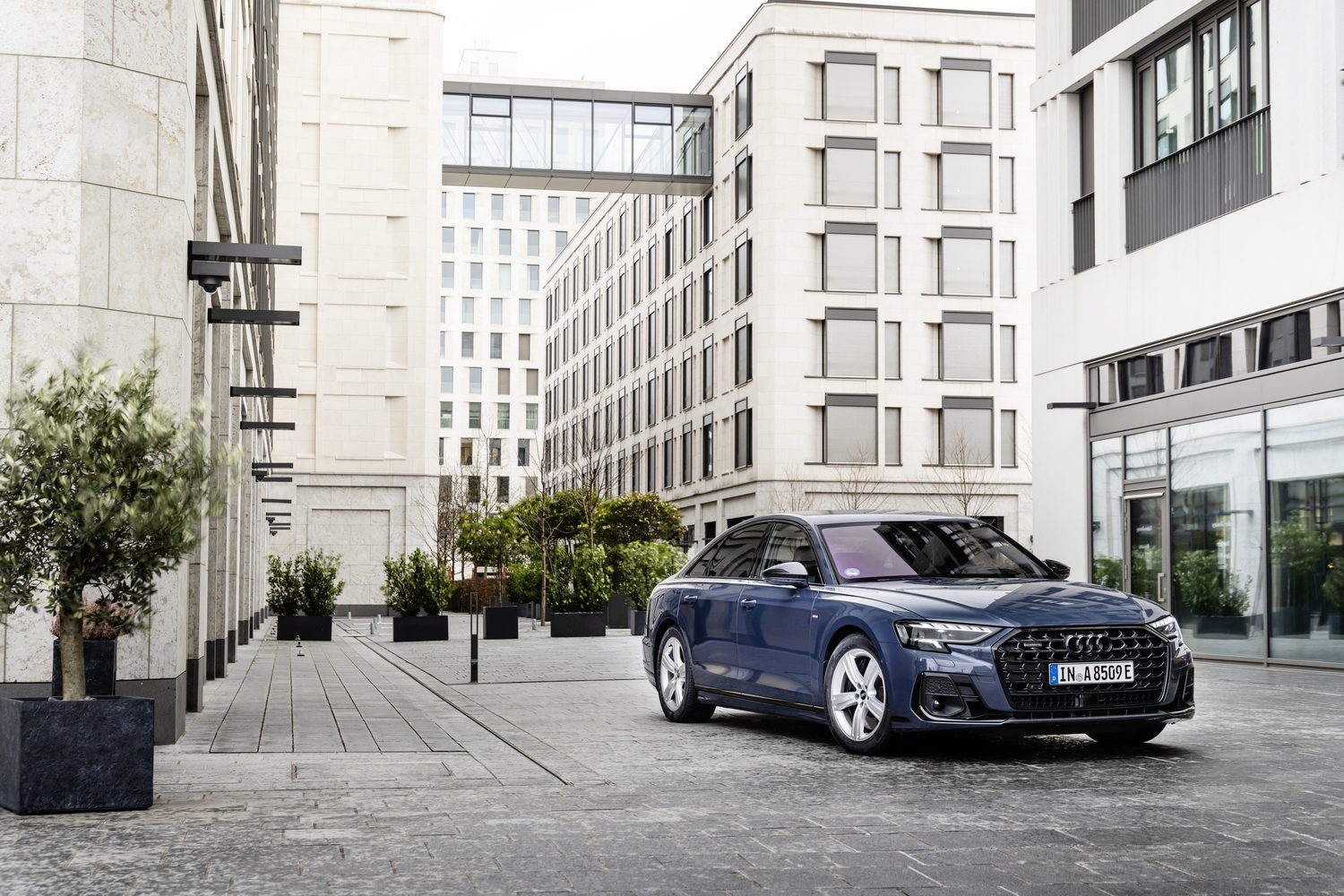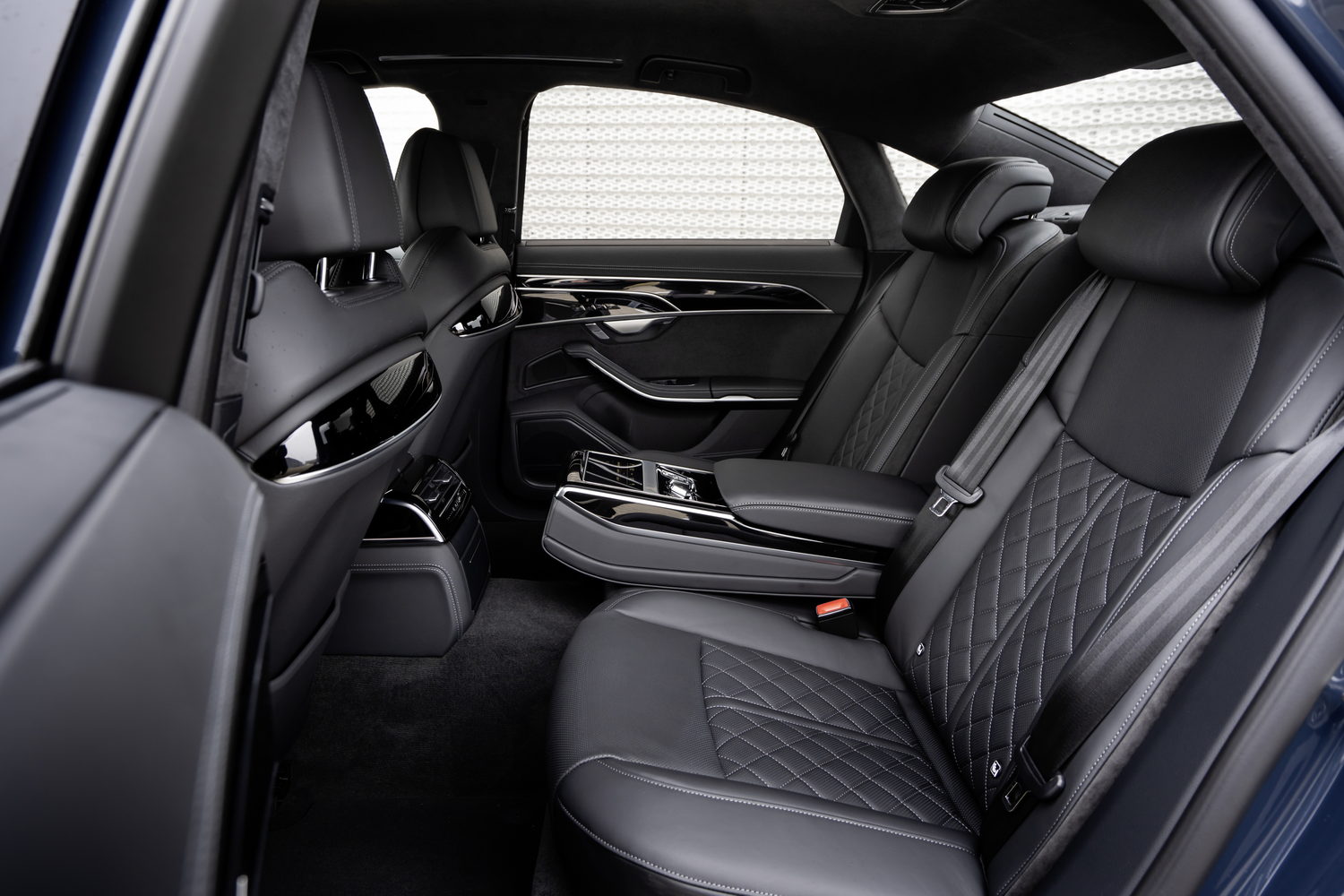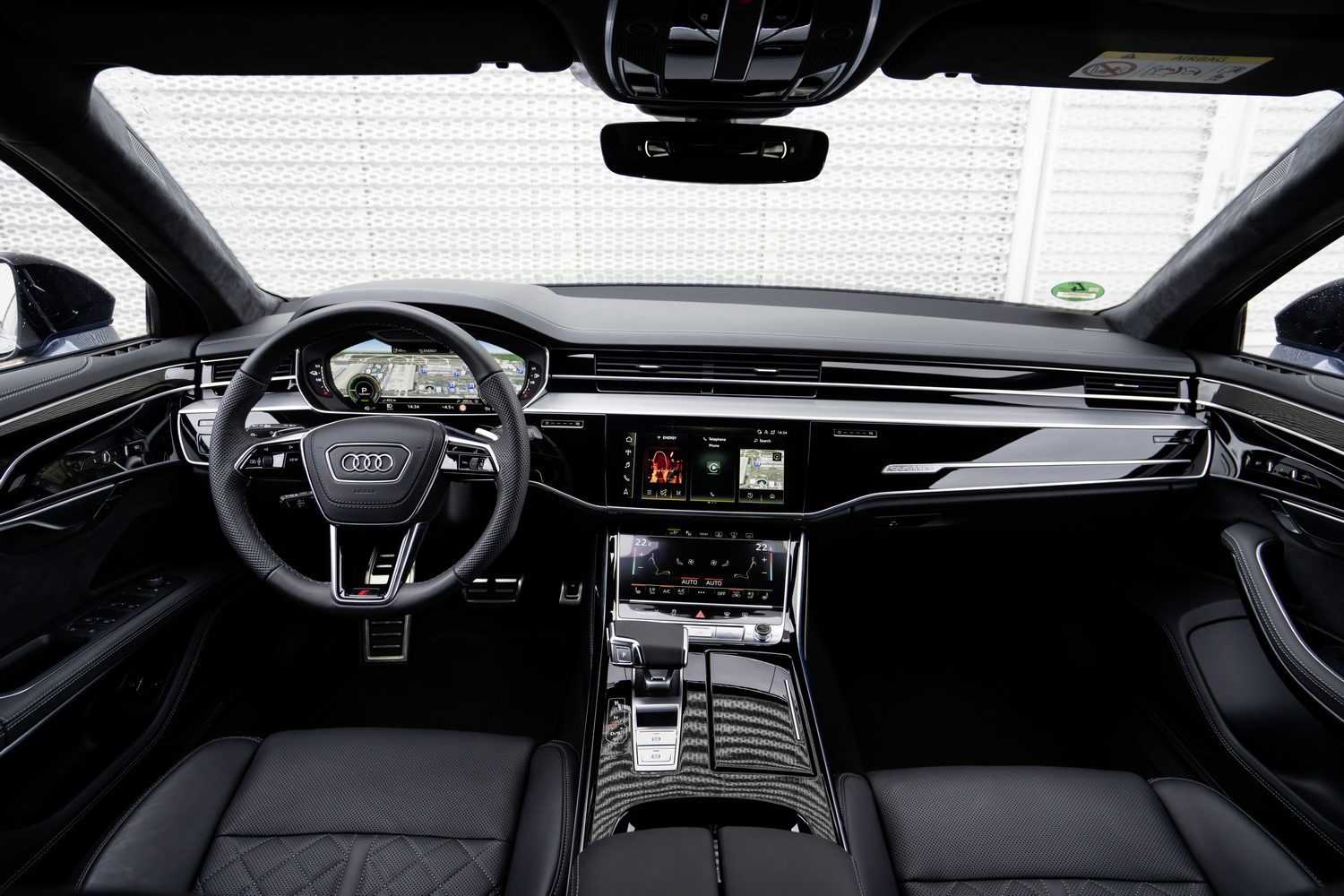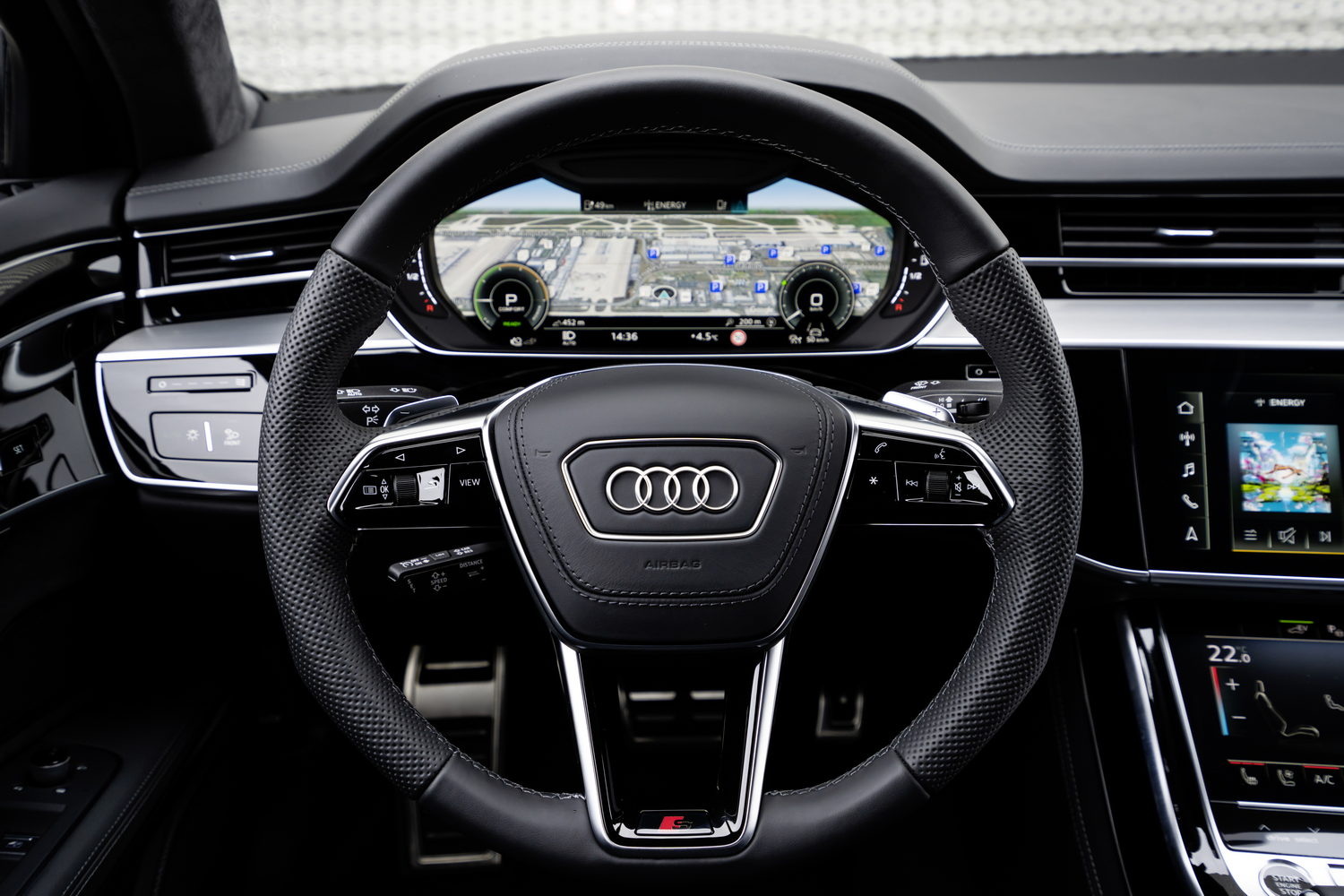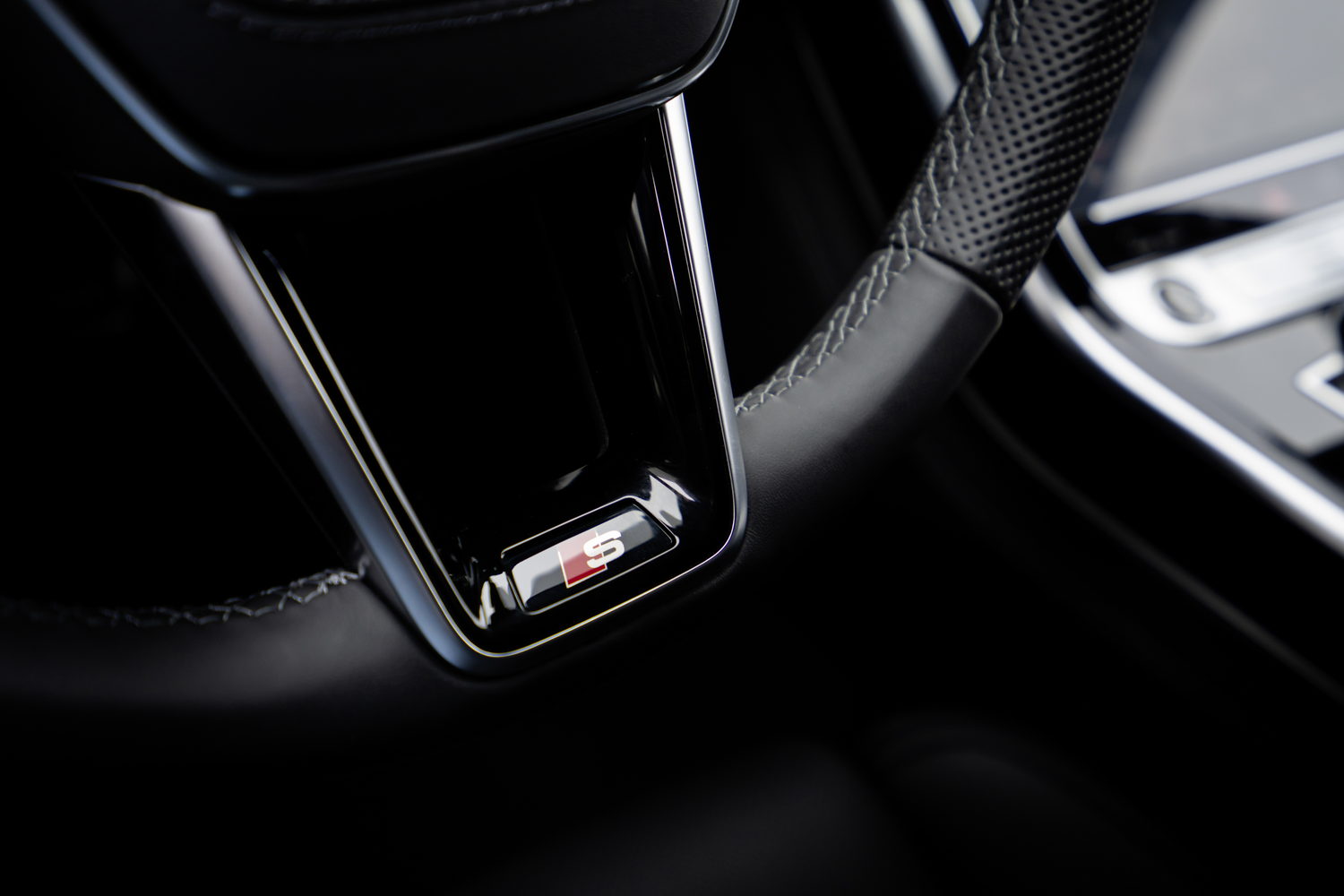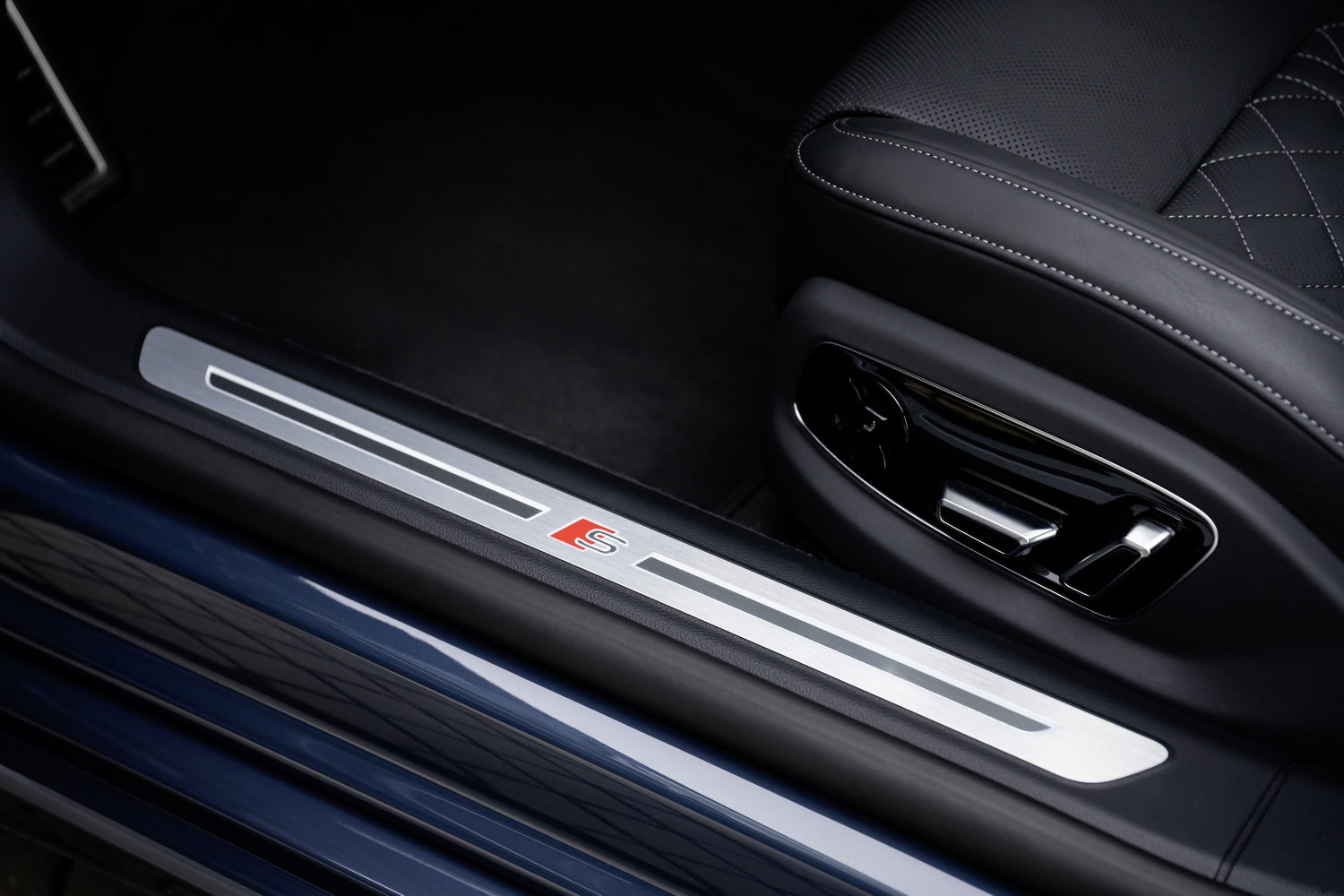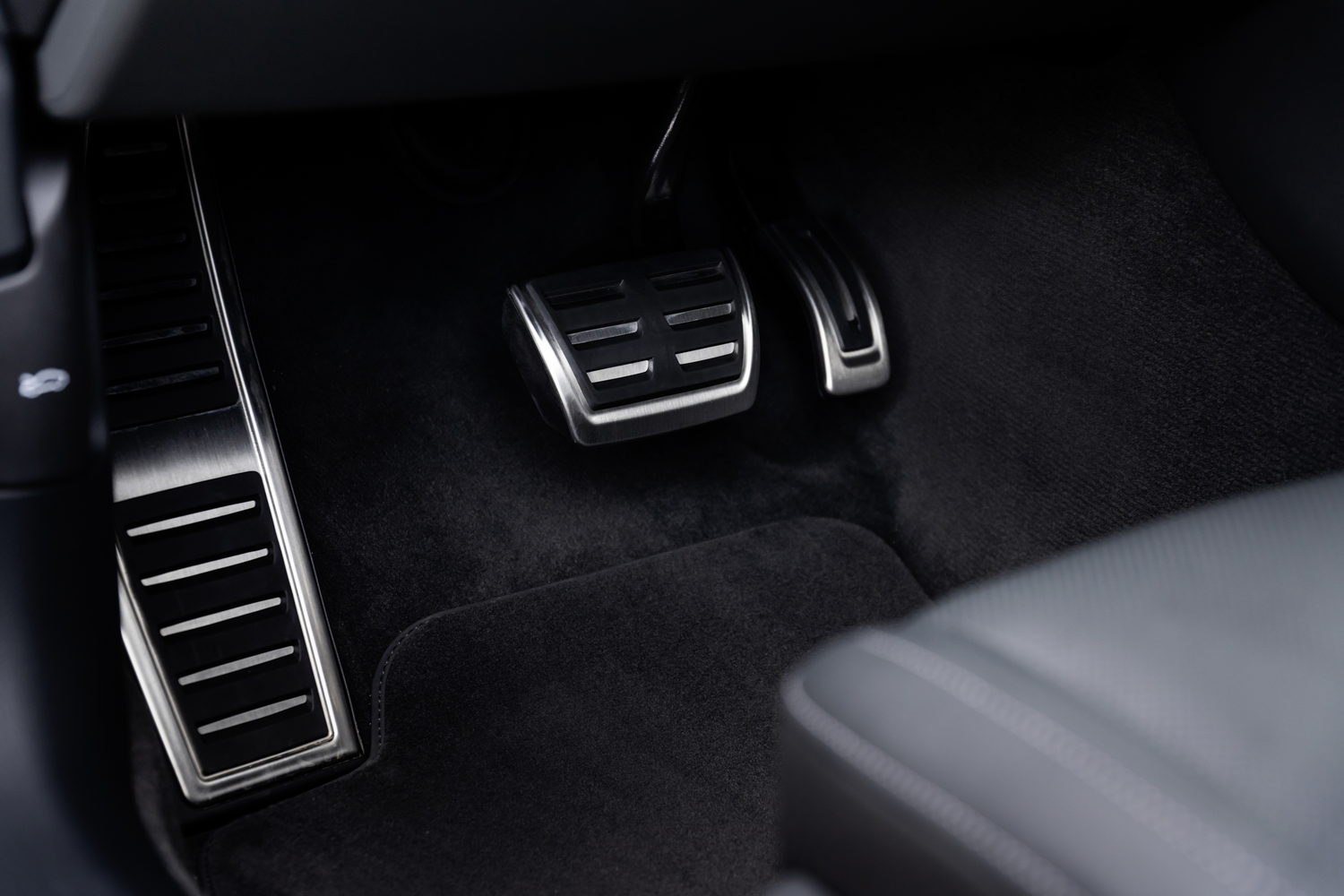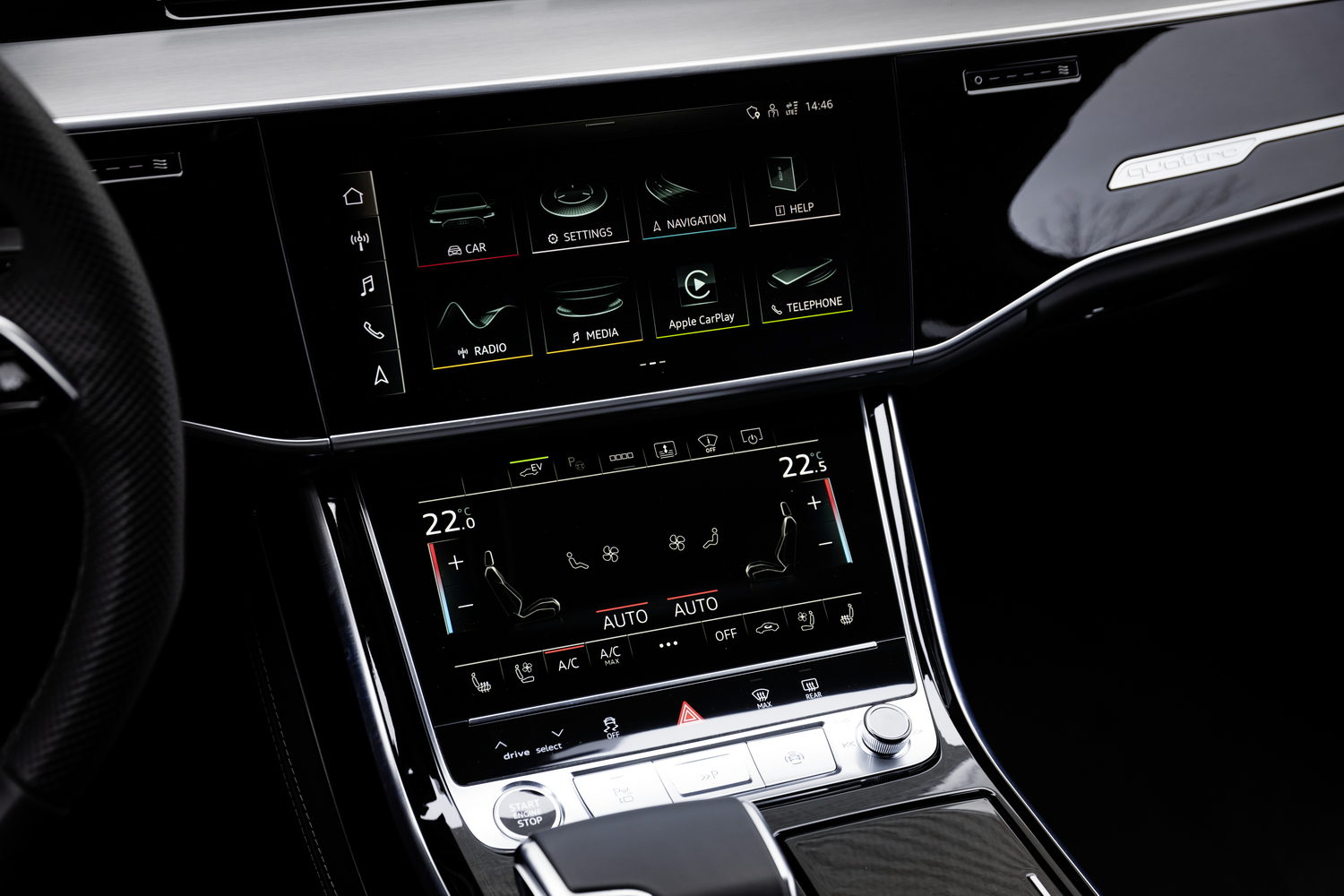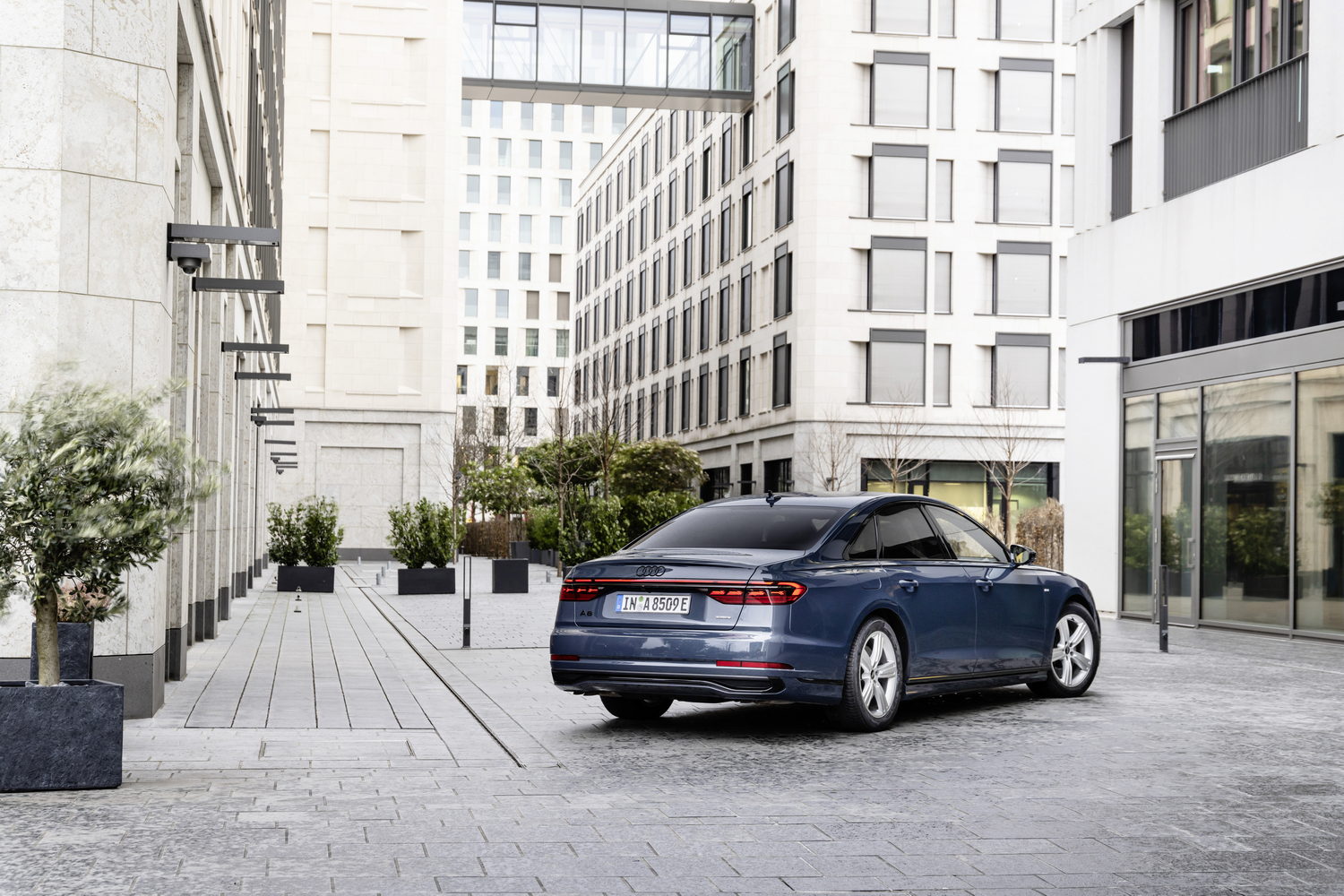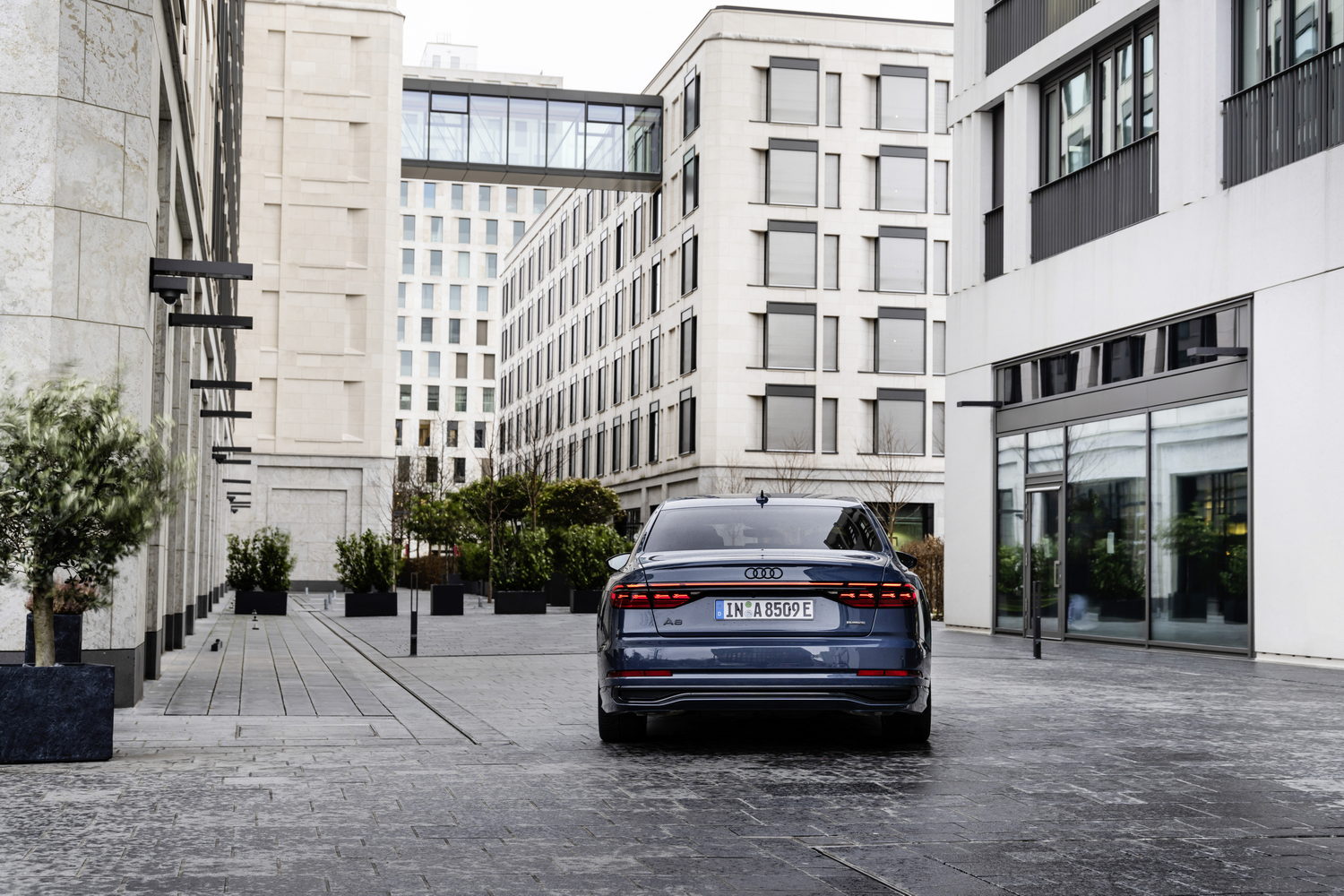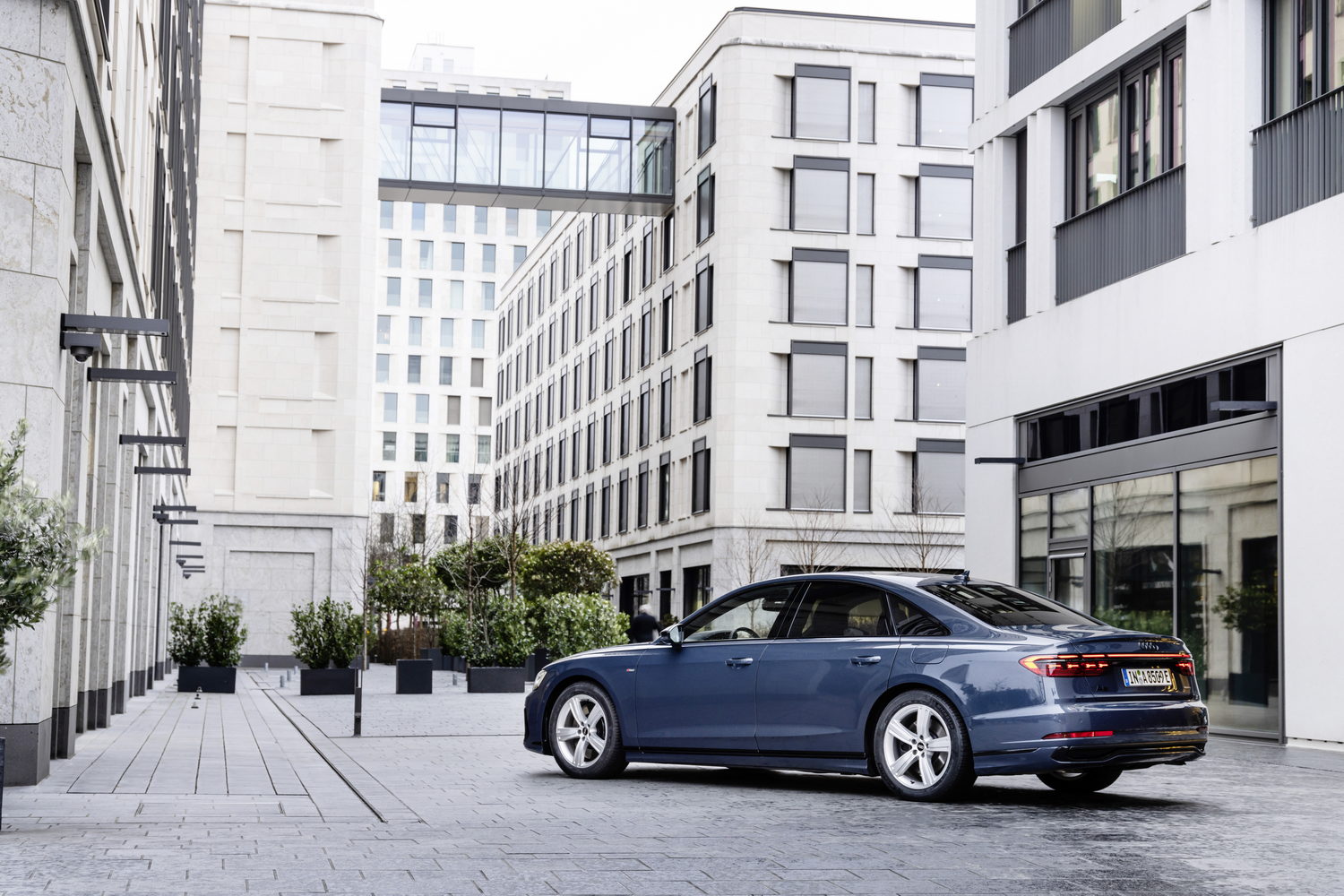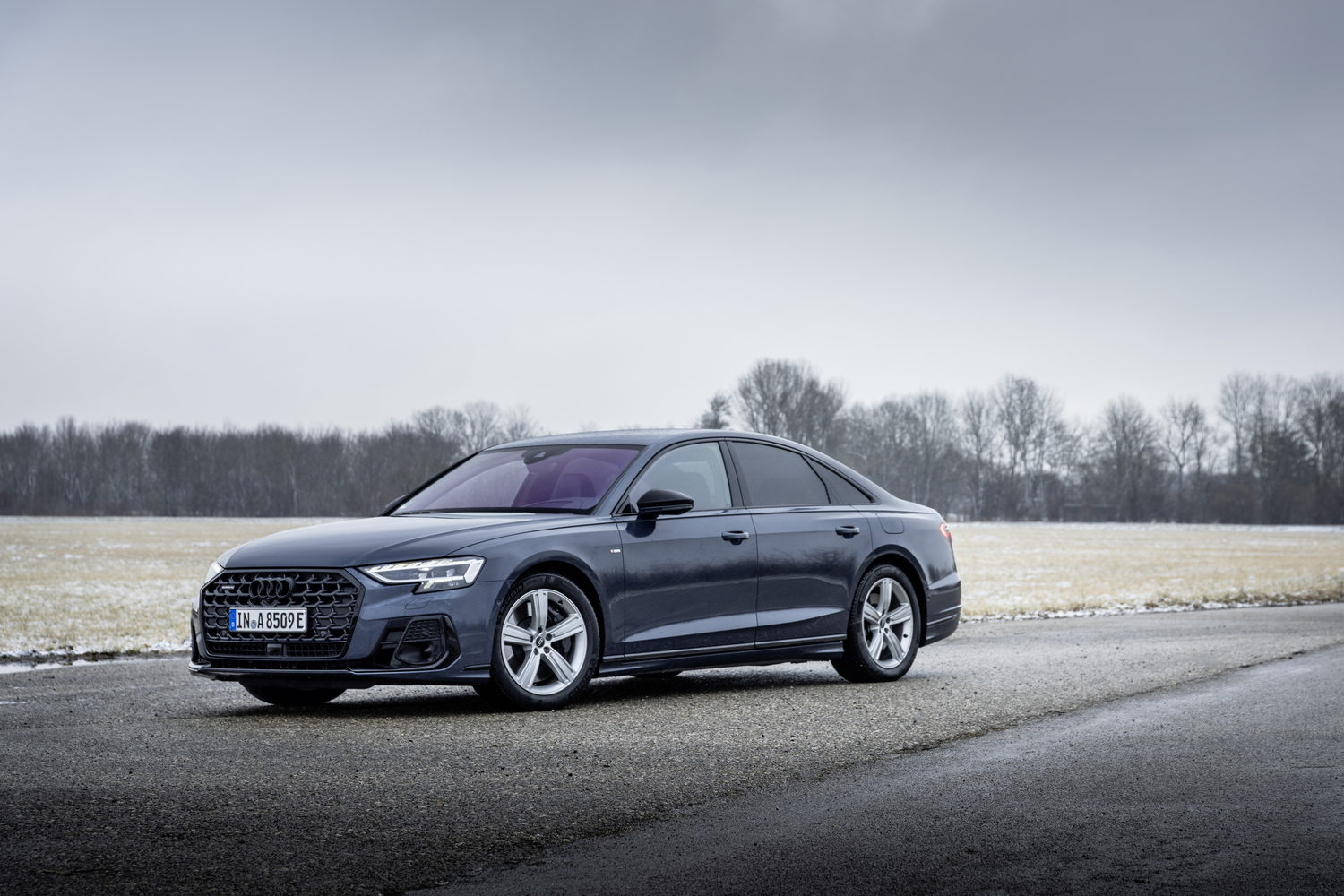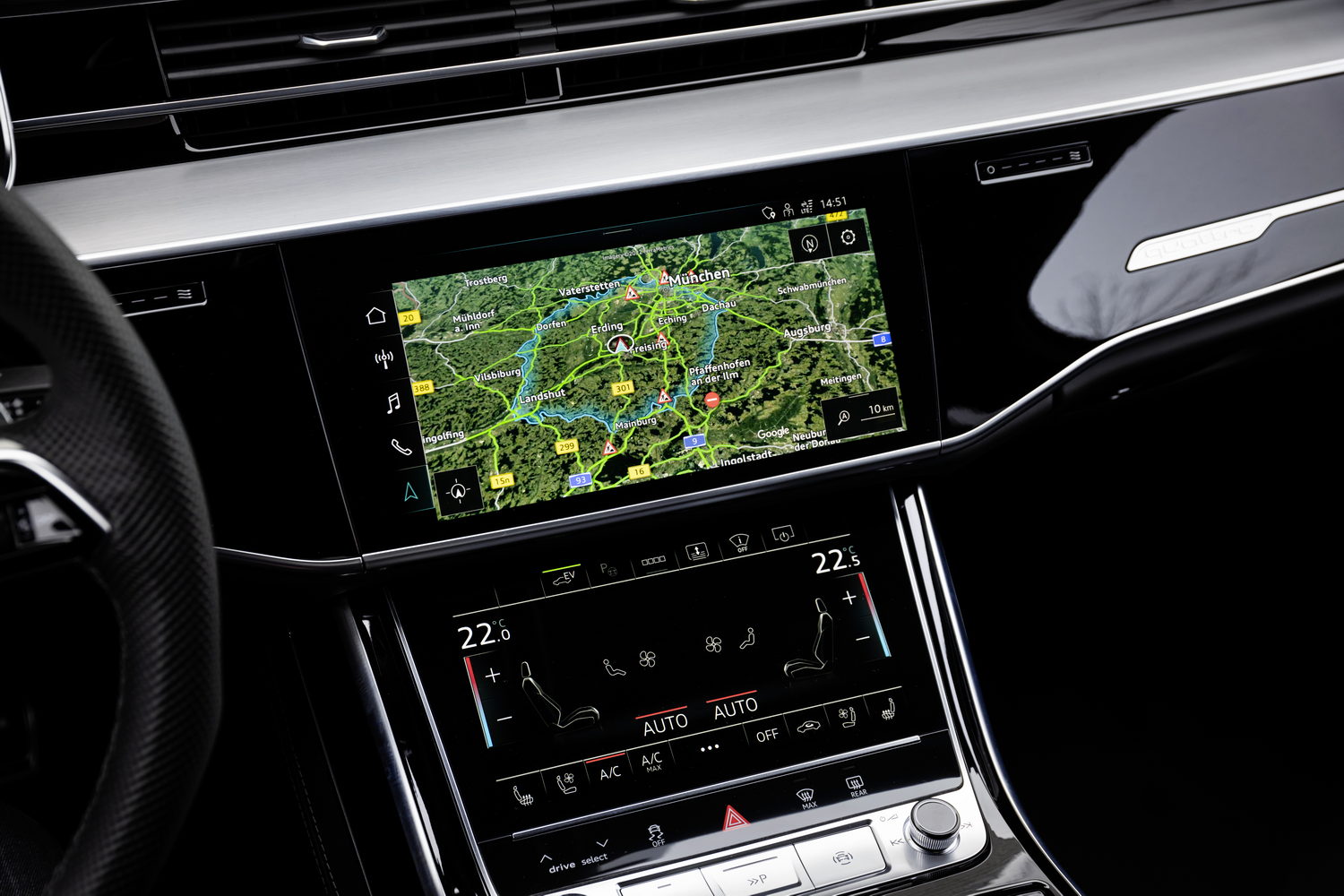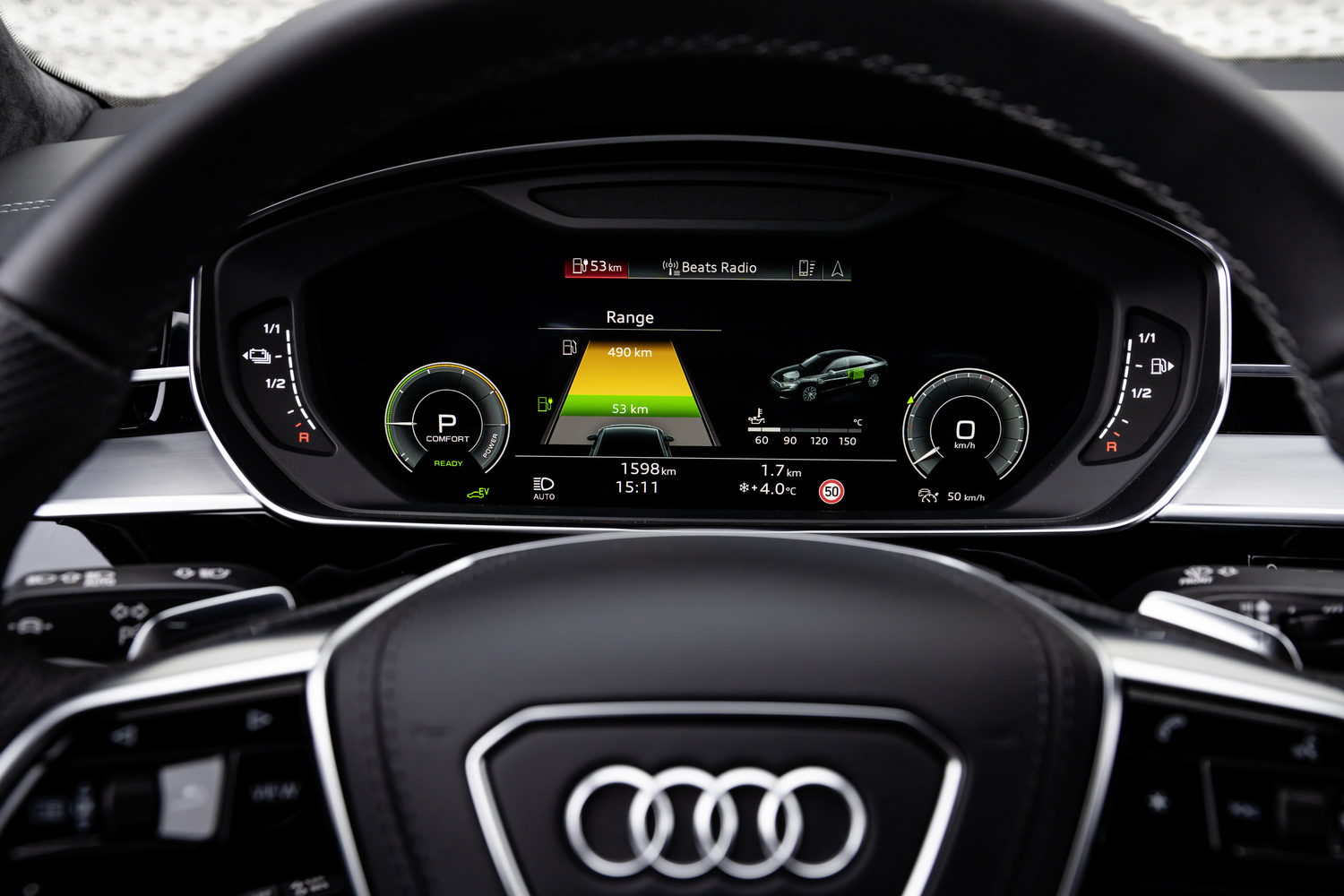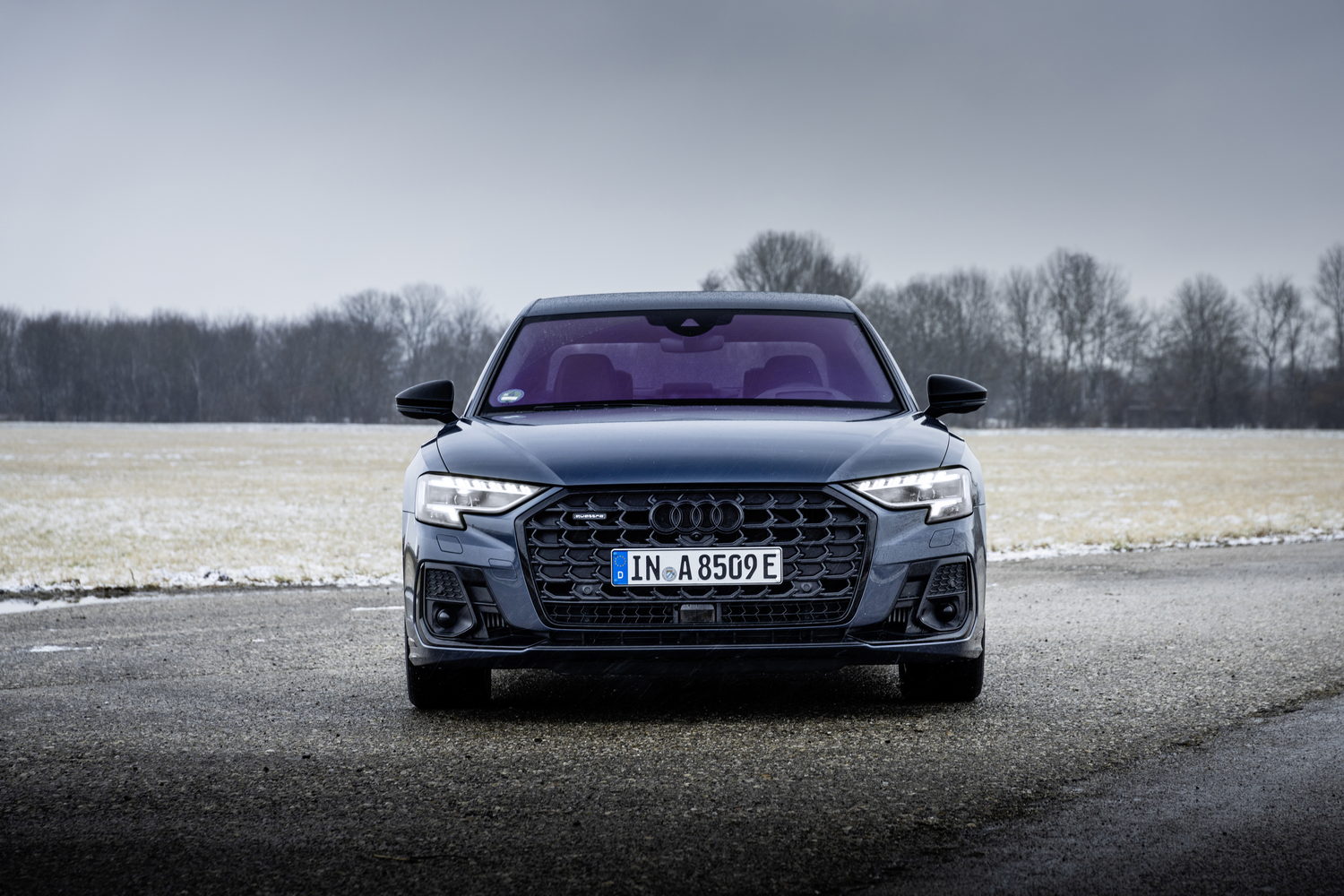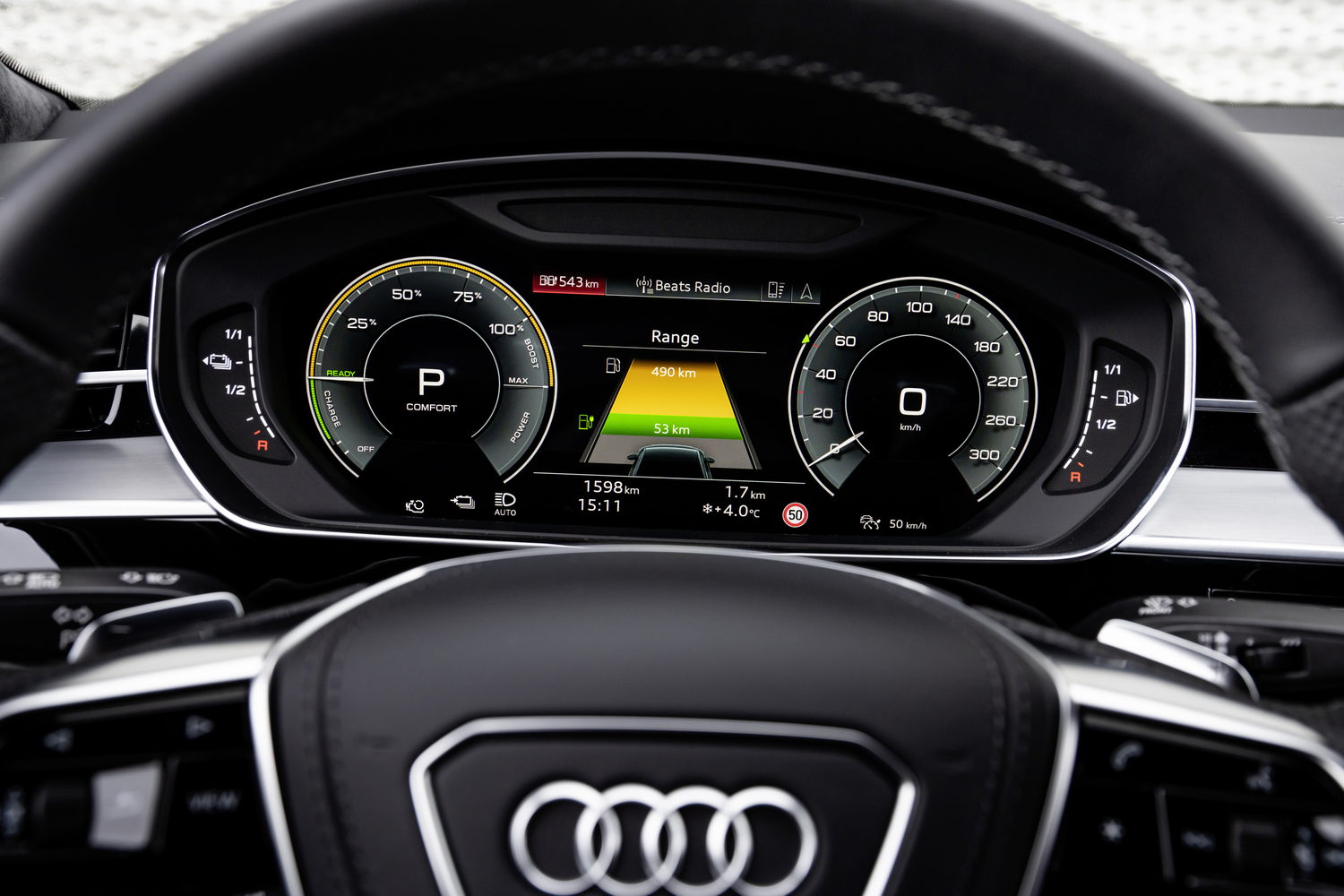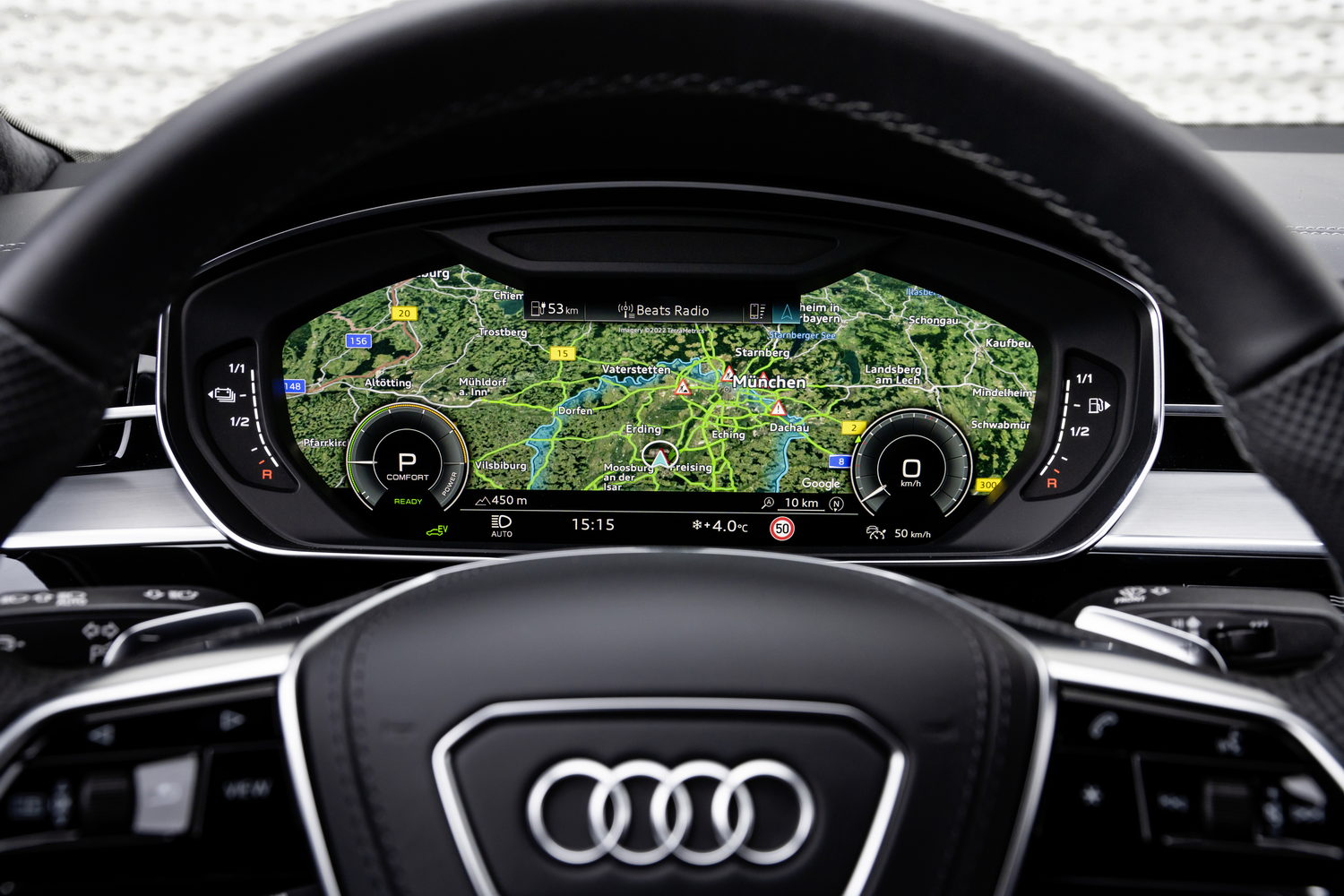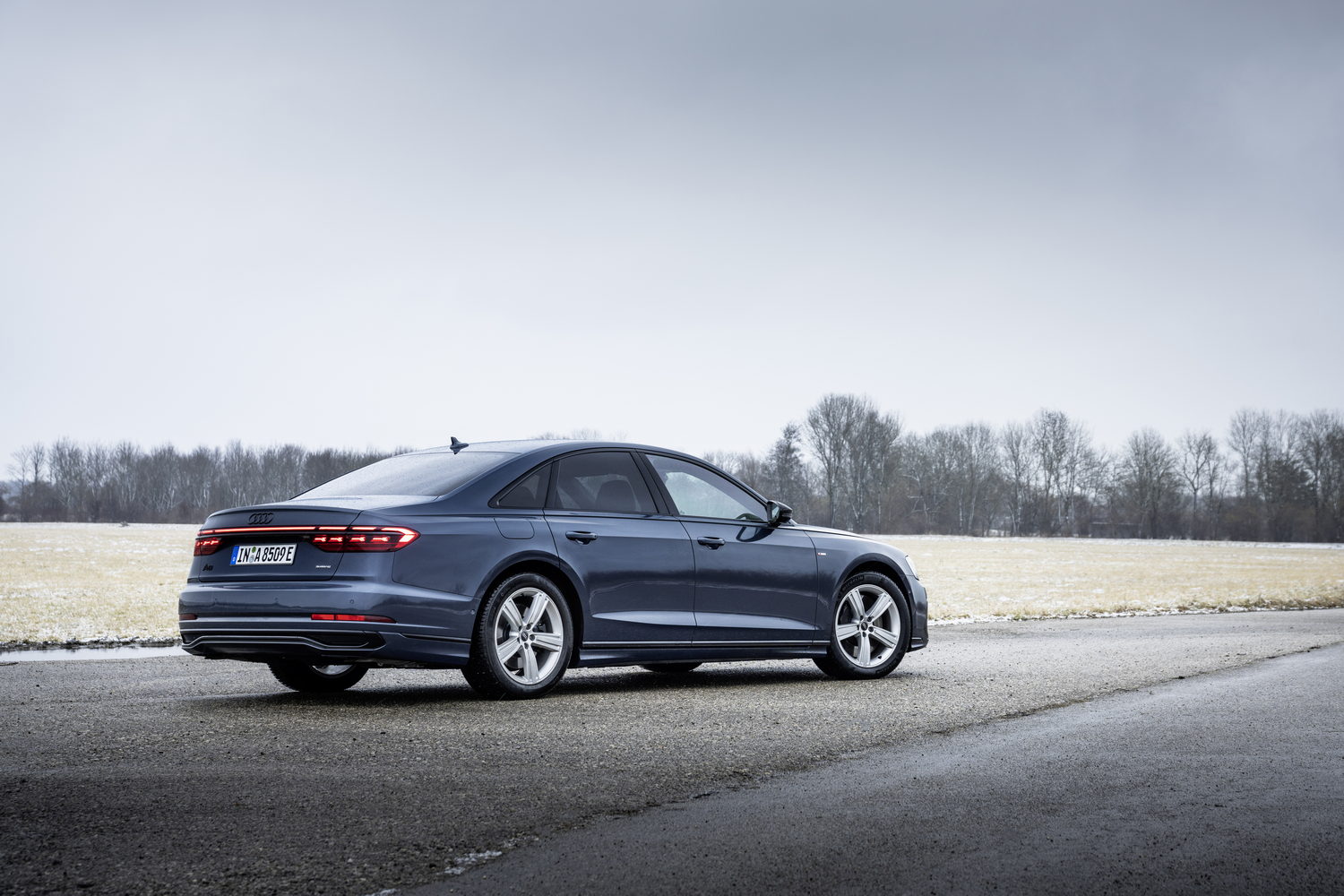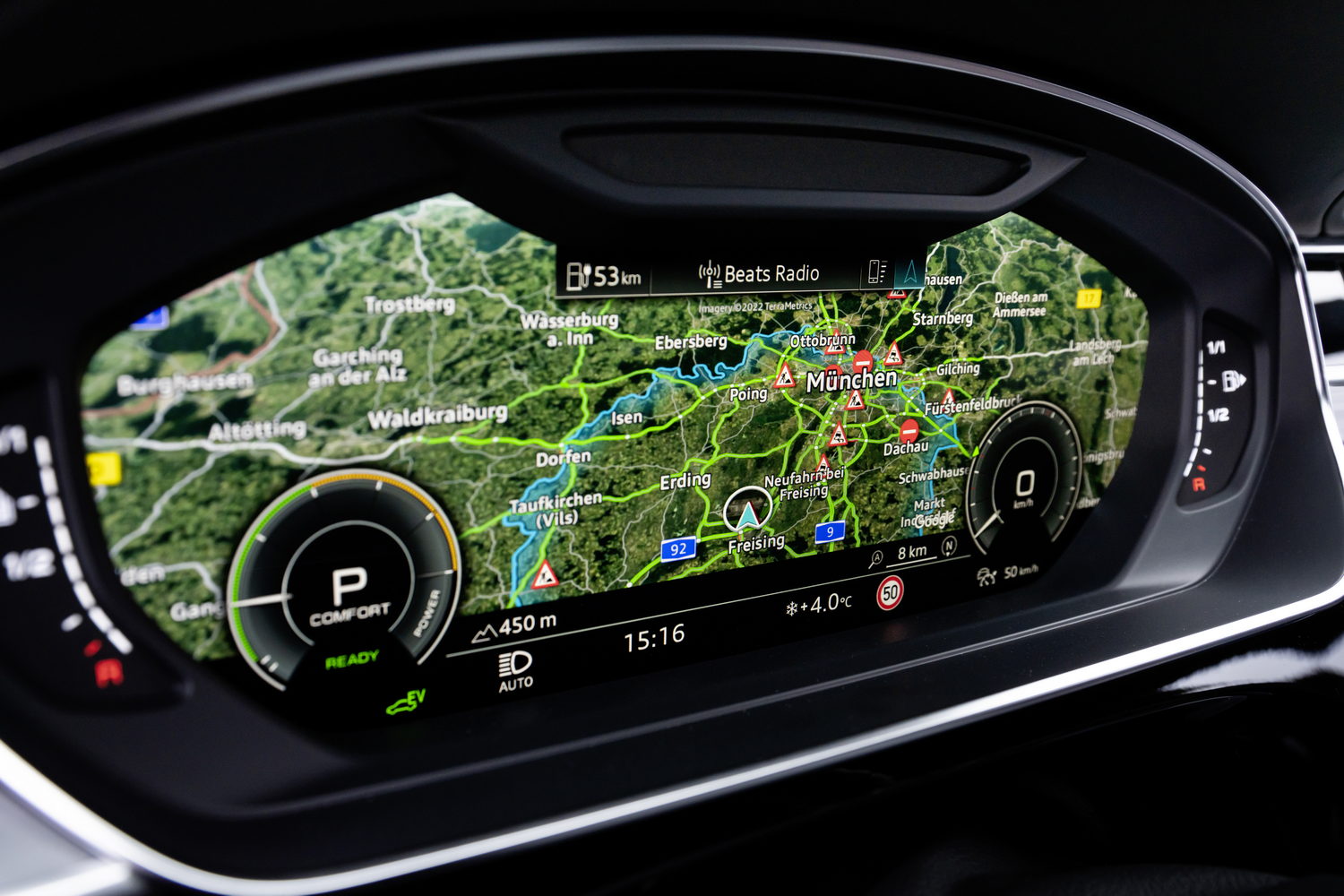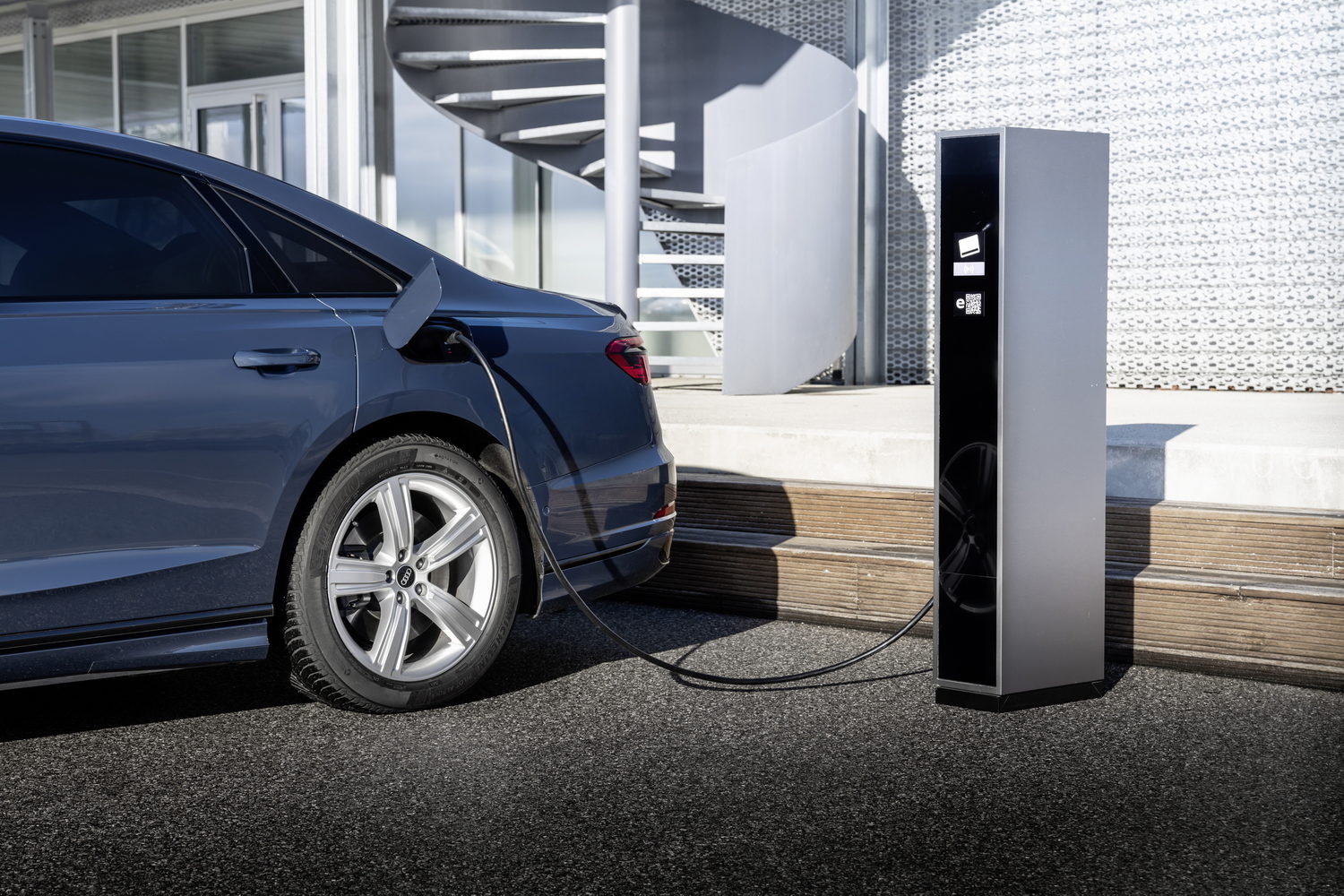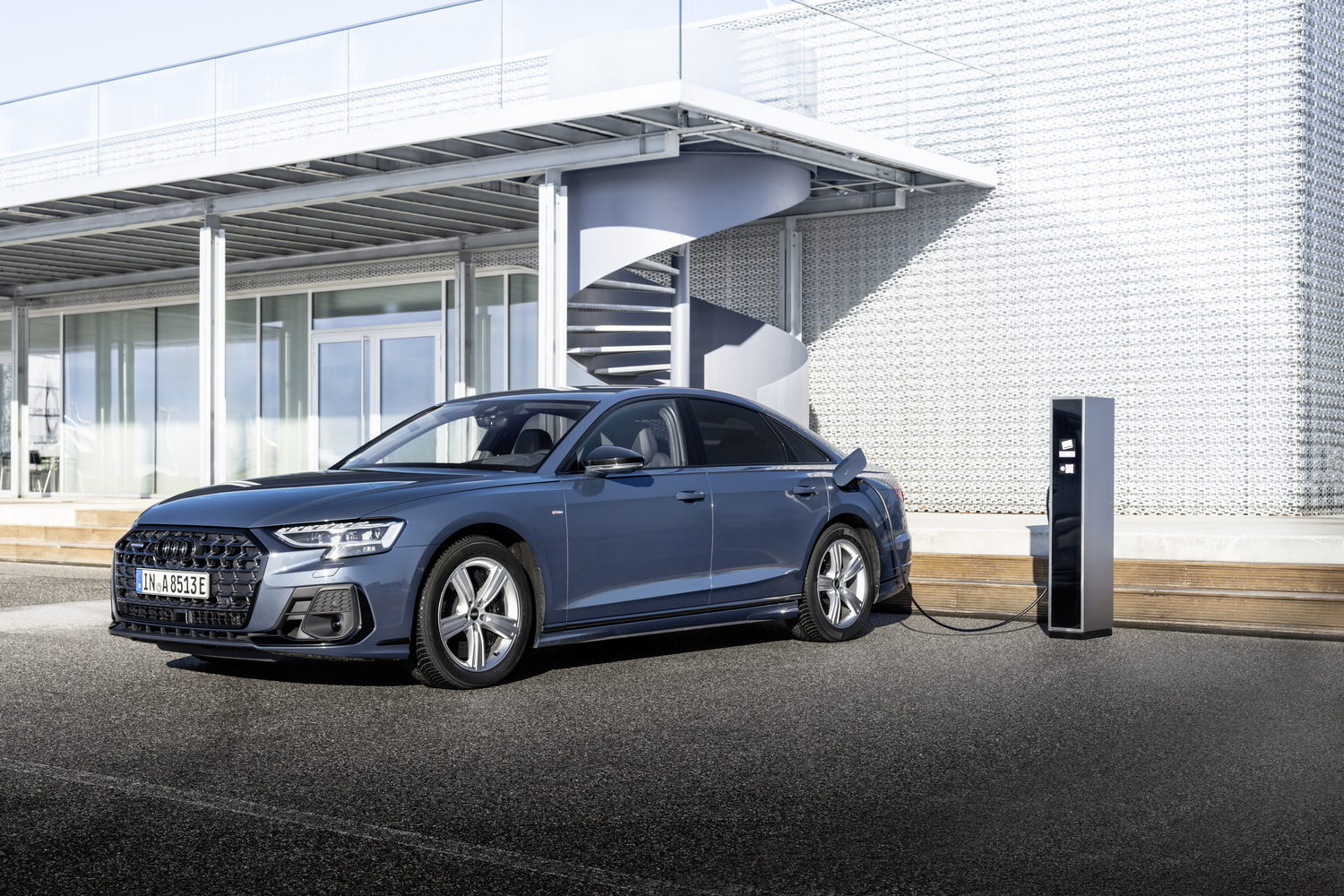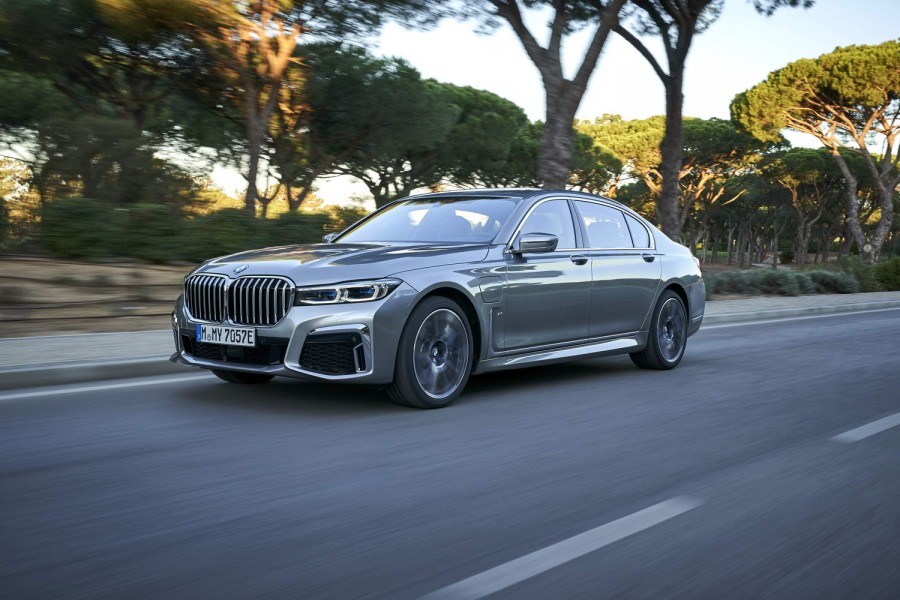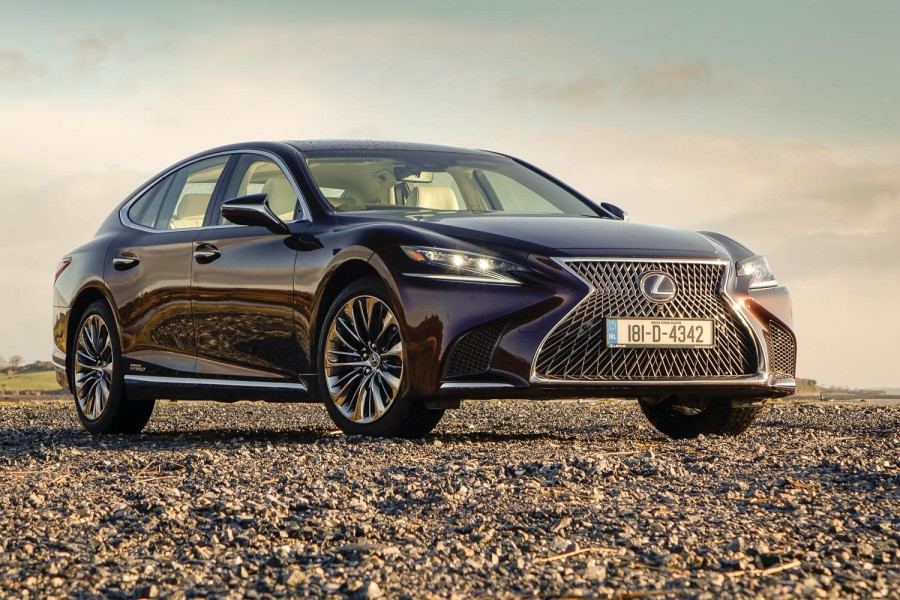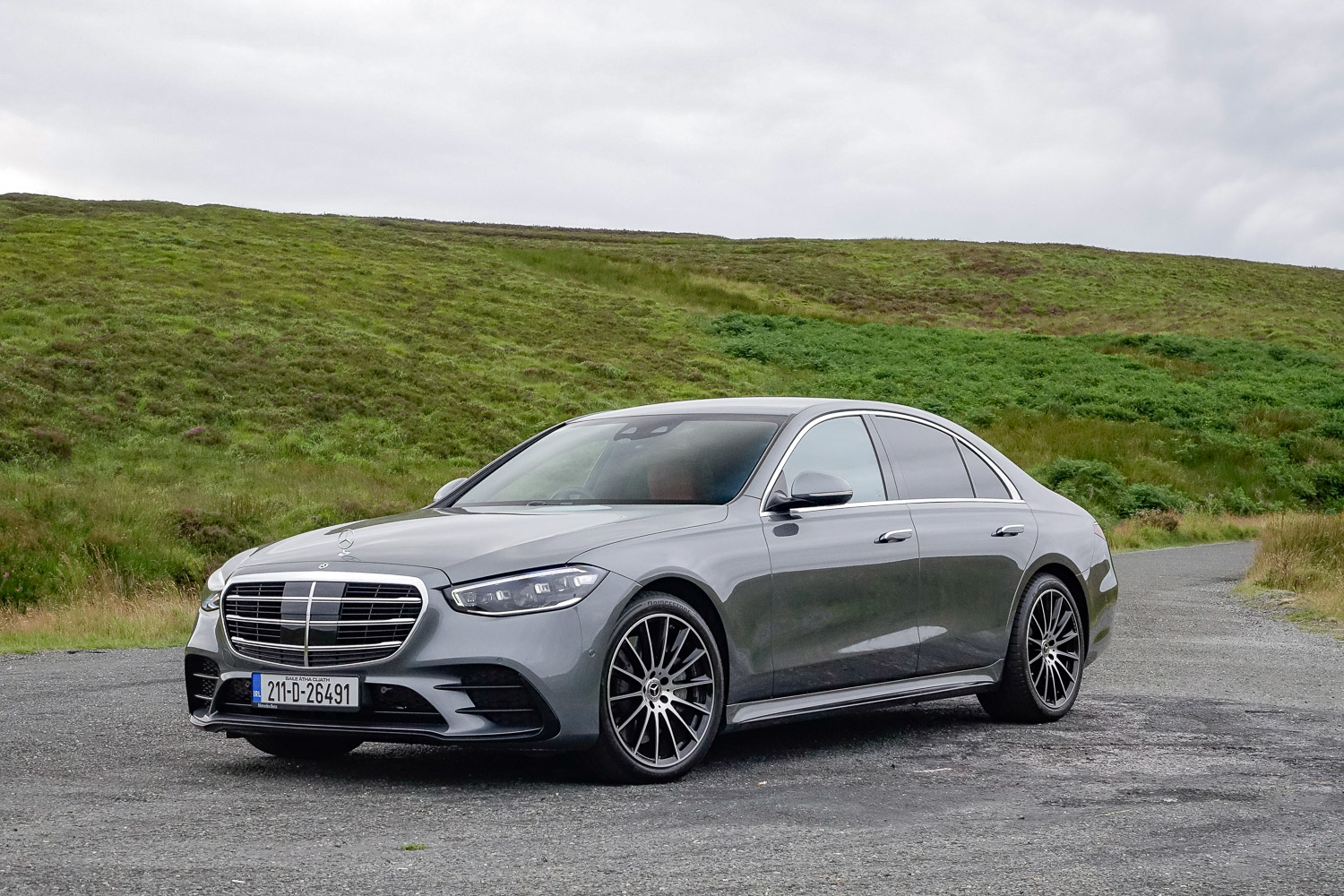If you want big, luxury saloons, you usually buy something German. Unless you're one of the multimillionaires buying Bentley Flying Spurs and Rolls-Royce Ghosts, that is. Anyway, the German brands are the go-to options and one of them - the Audi A8 - has had some work done. Some light styling tweaks and some fresh tech are on the menu for the company's flagship four-door, but will that be enough to bring it out of the shadows cast by its arch-rivals, the BMW 7 Series and Mercedes-Benz S-Class? We test drove the new model in plug-in hybrid guise to find out.
In the metal
In principle, the Audi A8 really hasn't changed much. But it does look a little different, because almost all the changes can be found on the surface. Chief among these is the front grille, which has grown to become more imposing than before, while the bumpers have been modified and there are new lights at the front and rear.
Those new headlights are LED units, and how clever they get depends on which model you pick and which options you choose. Go all out and you'll get new Digital Matrix LEDs, which come with 1.3 million micromirrors in each light cluster. That allows the car's electronic brain to focus the lights more accurately, so it doesn't just avoid dazzling other drivers, but it can also illuminate the car's lane more brightly. Apparently, such technology will make the driver subconsciously follow the light, reducing the chances of wandering out of the lane.
At the back, meanwhile, there's an OLED light bar across the width of the car, with drivers getting a choice of light signatures. Even more clever is the proximity sensor in the cluster, which illuminates all the OLED segments if a car comes within two metres of a stationary A8's rear bumper. It's social distancing enforcement for traffic.
But while Audi has made some changes to the exterior, the cabin is more or less identical to that of the outgoing A8. It has the same chunky-yet-futuristic design, and the same three-screen layout to control most of the car's functions. We aren't great fans of hiding things like heating and ventilation in touchscreens - it seems much safer and simpler to have physical buttons - but that's exactly what Audi has done. The screens aren't awful, and for most things they work pretty well, but it isn't the best way of doing things.
That's pretty much all we can find to criticise, though. The materials used in the A8's interior are generally first rate, and the build quality is utterly exemplary. Nobody could call a 7 Series shoddy, but the A8 wipes the floor with it. Add some diamond-quilted upholstery and some wood veneer and you might mistake it for a Bentley. Were we being picky, we'd lament the awkward door catches and the piano black trim that looks a bit naff once it has a few fingerprints on board, but the overall aura is very impressive.
In our test car, it was also quite sporty. That's because of the Black Edition trim level, which is based on the new S line model and comes with a dark radiator grille and sports styling, including black door mirrors and black window trim. Privacy glass and double glazing are also thrown in, as well as a "sports look" for the seats.
No matter which trim you choose, there'll be plenty of space for those in the front and ample rear legroom. Chauffeurs will want the long-wheelbase 'L' version, which comes with a little extra rear space, but even the standard-wheelbase car is perfectly acceptable. The L just provides that bit more stretching space for rear-seat passengers on long journeys.
The major issue is the boot, which measures 505 litres on most A8s. But when you choose the hybrid powertrain you lose more than 100 litres to the hybrid system, leaving you with 390 litres. That's fine - it's about what you get in a VW Golf - but it isn't quite as capacious as the standard car and it's shallow, which means its less capable of carrying bulkier items.
Driving it
The snappily named 60 TFSI e model might not sound particularly special, but it uses some clever technology - even by the standards of a plug-in hybrid system. In essence, though, it's the same system used in the Porsche Cayenne E-Hybrid, which means there's a 3.0-litre V6 petrol engine and an electric motor, which is fed by a 17.9kWh battery pack (although only 14.4kWh is usable).
There's nothing particularly remarkable about that in itself - at least not in the world of premium plug-in hybrids - but the 462hp power output is considerable. It's enough to get this 2.3-tonne saloon from 0-100km/h in 4.9 seconds and on to a top speed of 250km/h. What's more, it'll also cover up to 59km on electrical power alone, giving it the potential to drive quietly and cleanly around town.
Not that it's loud when the petrol engine is running. Of course, the V6 makes a very Porsche-like snarl when it starts up, but otherwise it's very refined. Only when you really start to demand that performance will it produce a slightly throatier V6 roar, and there's nothing wrong with that. It sounds quite sporty for a big saloon. That said, it doesn't quite have the smoothness of the straight-six engine in the BMW 745e plug-in hybrid.
Nevertheless, the 60 TFSI e is very refined and very clever, with a system that allows the navigation to influence the powertrain's decision-making. If you've set a route in the navigation system, the car will work out when to use the electric motor and when to use the petrol engine by itself, switching seamlessly between fuel types on the fly. If, for example, your route sandwiches two motorway stretches between three short urban drives, the car will use electrical power in town, then switch to petrol as soon as you hit the first motorway, allowing the car to save battery for the later urban stints.
To make the most of the hybrid system, however, you'll need an extremely specific set of circumstances. A 59km range is not exceptional, so you'll want to charge regularly and stick to short distances if you want to achieve anything like the 1.8 litres/100km Audi quotes. Ideally, you only want to use the petrol engine on occasional long drives, but if you're doing more regular motorway miles, you'll probably find the diesel versions easier on fuel.
Powertrain aside, the A8 ticks plenty of luxury saloon boxes. Air suspension is standard across the range, and though the ride isn't quite as soft as that of an equivalent S-Class, it's still pretty impressive. Admittedly, the smooth German roads of our test route weren't too taxing, but the A8 dealt with the bumps it faced without fuss, allowing only a brief bobble into the cabin. Around town, it's composed, rather than overly cushioned, and that stands it in good stead on the motorway, the natural hunting ground of the diesel and petrol versions.
Handling is not the A8's bag, however, and it's way behind the 7 Series in terms of poise. That said, it's relaxing and simple to drive, with light steering and decent visibility, as long as your passenger doesn't raise all the sun blinds in the rear... The optional four-wheel steering also means manoeuvring isn't too much hassle, while standard four-wheel drive gives it a slightly more sure-footed feel when the snow falls.
For those who want an A8 that handles, the S8 is the best option, with trick suspension that keeps it level in bends and standard four-wheel steering for extra agility and stability. That's a seriously impressive piece of kit.
What you get for your money
Audi Ireland hasn't yet told us how much the plug-in hybrid A8 will cost, so we'll reserve judgement on pricing until we know more.
Summary
The A8's hybrid system is very clever, and it works well with the on-board technology, but the fact remains that the Audi A8 is much the same as before. Some new styling hasn't really changed a car that, while impressive in its own right, never reached the heights of rivals from BMW and Mercedes-Benz.
The A8's problem is not a lack of capability, but a lack of direction. The 7 Series is great to drive, and the S-Class is great to be driven in. By splitting the difference between its rivals, the A8 has simply limited its appeal, but it remains a competent and compelling alternative all the same.

